June 28, 2020
Martha O'Kennon



First is the Deptford Pink. What it loses in size or numbers, it makes up in PINK. Second is the Common Day Lily. Again, being Common does not mean being mean or second-rate. It makes up most of the roadside color in every Small Town, USA. And Honeysuckle. Maybe you didn't grow up pinching (or biting) off the stem end of this ordinary-looking little flower, but now is your chance. Pinch off that end and suck in the most purely sweet sap in the world. Lucky you. This little plant has so far survived the war against Nature.
Remember that there is information in the name of the file for each image. You can see it by mousing over the image - look at the lower left of the screen. Or you can click on the image to get to the (usually) larger image. Then the info is displayed in the address line above. Sometimes the second click will actually display a different view of the original image.
Summer must be here. The Ants are everywhere and doing what they need to do to stay with us. My favorite is the Hairless Rover Ant (Brachymyrmex depilis). It is known as the Ant that needs to stay on the forest floor - it hasn't got a lot of hairs to protect it.. But in fact every time I've seen one it has been up in the leaves of plants. This one was on Aster. I'd like to publicly thank Steven Wang of iNat for all the interesting side info about the ants and in particular for introducing me to this little yellow Ant. It's only about 1 mm long. (Convert: 3 mm is about an eighth inch.) Second here: This little ant has some very interesting patches of reddish-orange, different from the distribution I expect from the basic genus Camponotus (Sugar and Carpenter Ants). I realized when checking the picture that this ant was acting qua mirror - I was wearing my bright Orange pants out there. Third is one in that genus with a bit of prey.


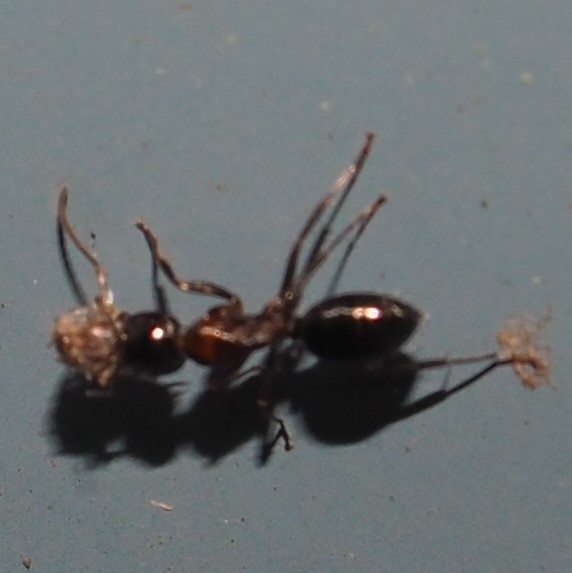
You'll like this one - or else! This Eastern Black Carpenter Ant has been waiting patiently for the nymphs of the Keeled Treehoppers to hatch from their voluminous egg "farms". They usually stroke the nymphs so that they will exude a sweet drop of "Honeydew", which the ants love. Here is one who, missing the yet-to-hatch nymphs, has apparently stroked the Mother Hopper, so that she has offered the Ant a large drop of her own honeydew. In picture 3, the Ant drinks its reward.



Here's an example of questions that arrive when trying to figure out an insect from the plant it is on, and the plant from the insects on it. Along the North Wall of the shop siding is a plant that last week came alive with Green Aphids. Yesterday (June 26) I got this picture of the top of the plant and for the first time spotted these football-shaped orange-red creatures, which I think are another kind of Aphids. Wish us luck on all fronts!
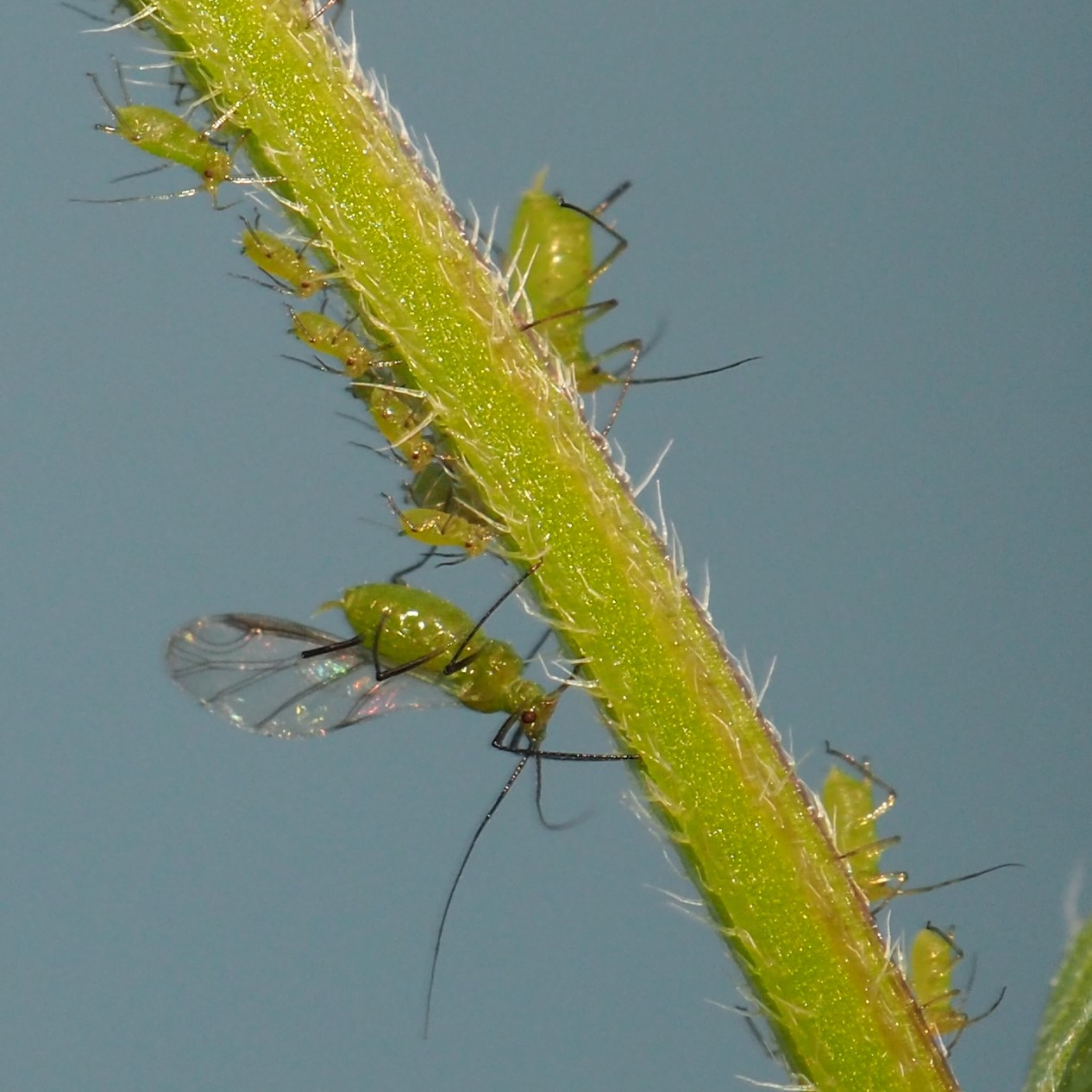
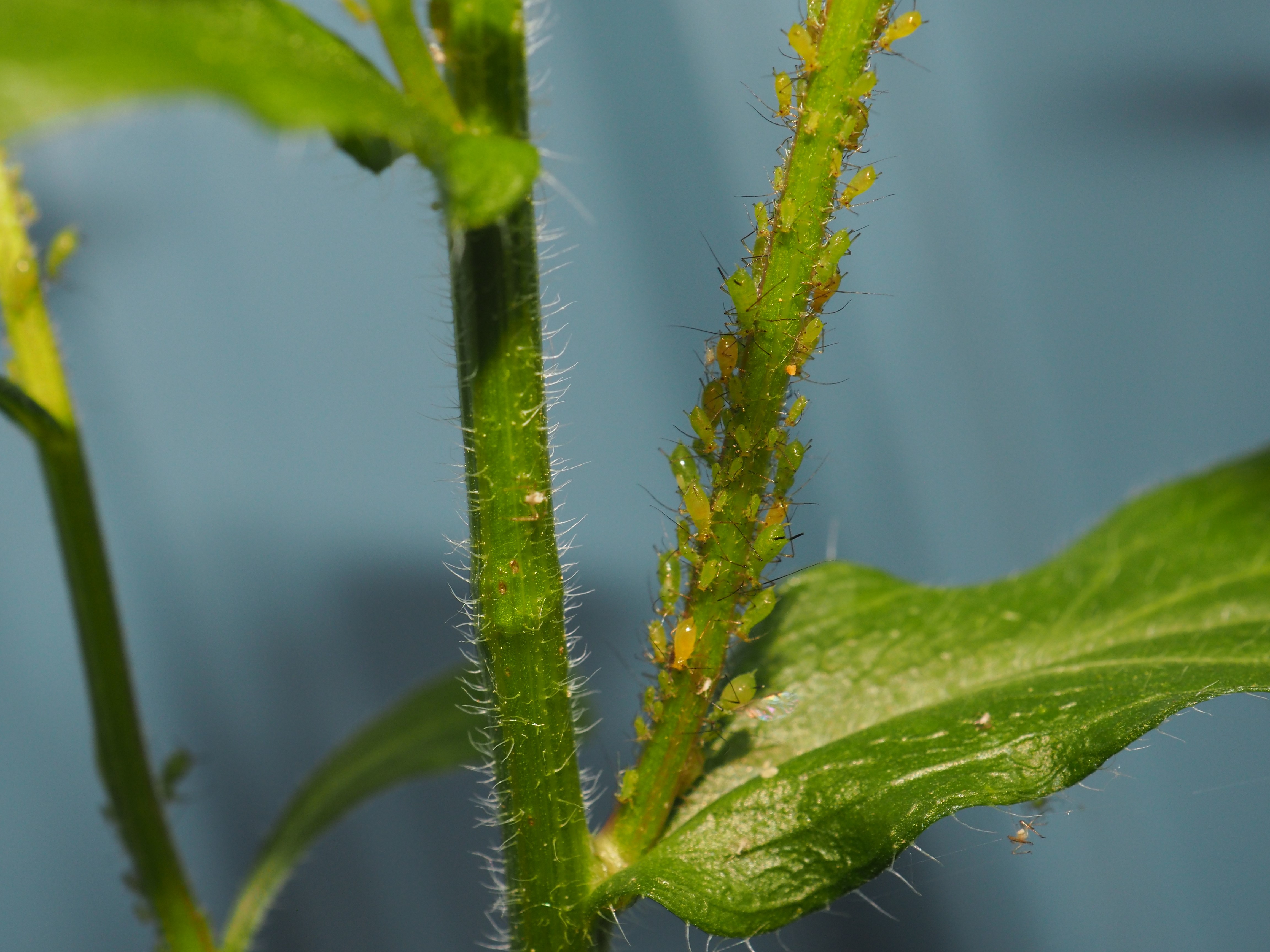

Last week we reported that the little Barklouse nymphs that we had been following for a month turned out to be a common Barklouse named Polypsocus corruptus. That case solved (to my satisfaction), we turned to the clutches of Barklouse eggs left at various places along the East and North Walls. My guess was this time that they had been laid by the numerous Graphopsocus cruciatus adults that had spread from many sites on the East Wall. But at first they don't seem to have the double row of reddish spots that G. cruciatus nymphs seem to have. I believe that now the dots are beginning to appear. Here are some of the eggs from the North Wall, panel 11, in the process of hatching. I hadn't noticed till just this moment that at the upper left of the display is one nymph with the requisite red spots. In this second picture, two of the three hatchlings have the faint red-spot markings. Picture 3 shows a new occurrence - this is the nymph of the Barklouse Metylophorus novaescotiae. Actually, one (picture 4) had appeared on June 10.

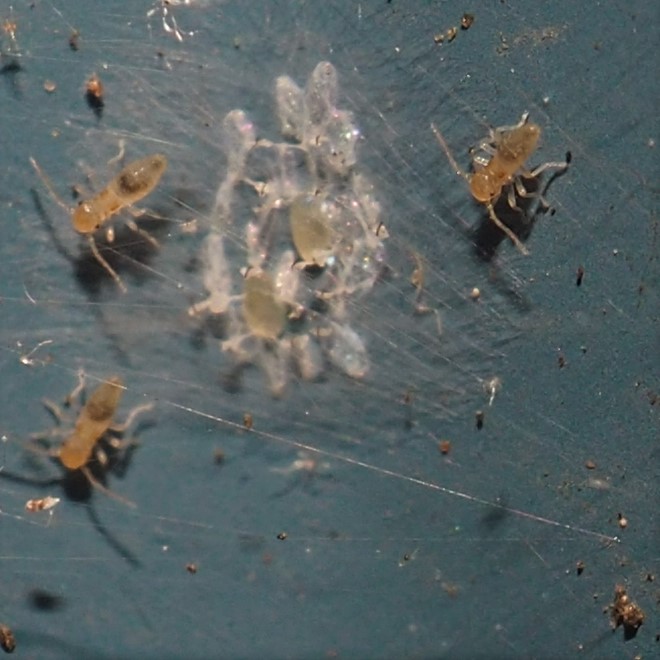
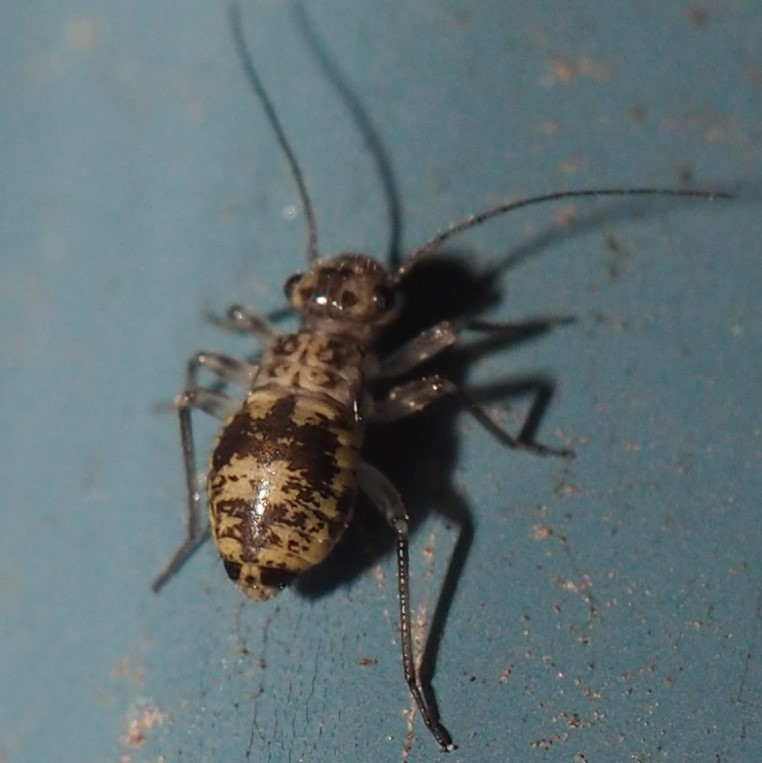
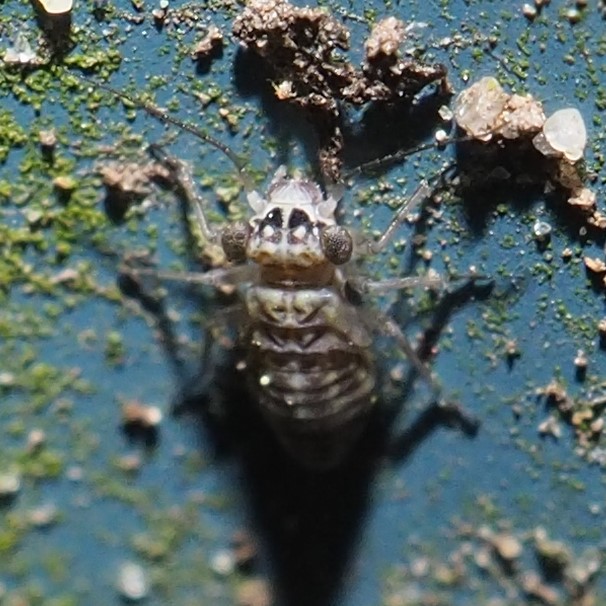
We're up to the Bees. Unfortunately, as the Goutweed and the Heliotrope faded out, so did the Nomad Bee but at least we did have that one more week to admire it. This one would probably be Nomada maculata. And so we jump to the Beetles. How can we not see this Carpet Beetle? They became very common when the Goutweed called them in! This black Click Beetle was walking along the deck siding but then hid from my wandering eye.
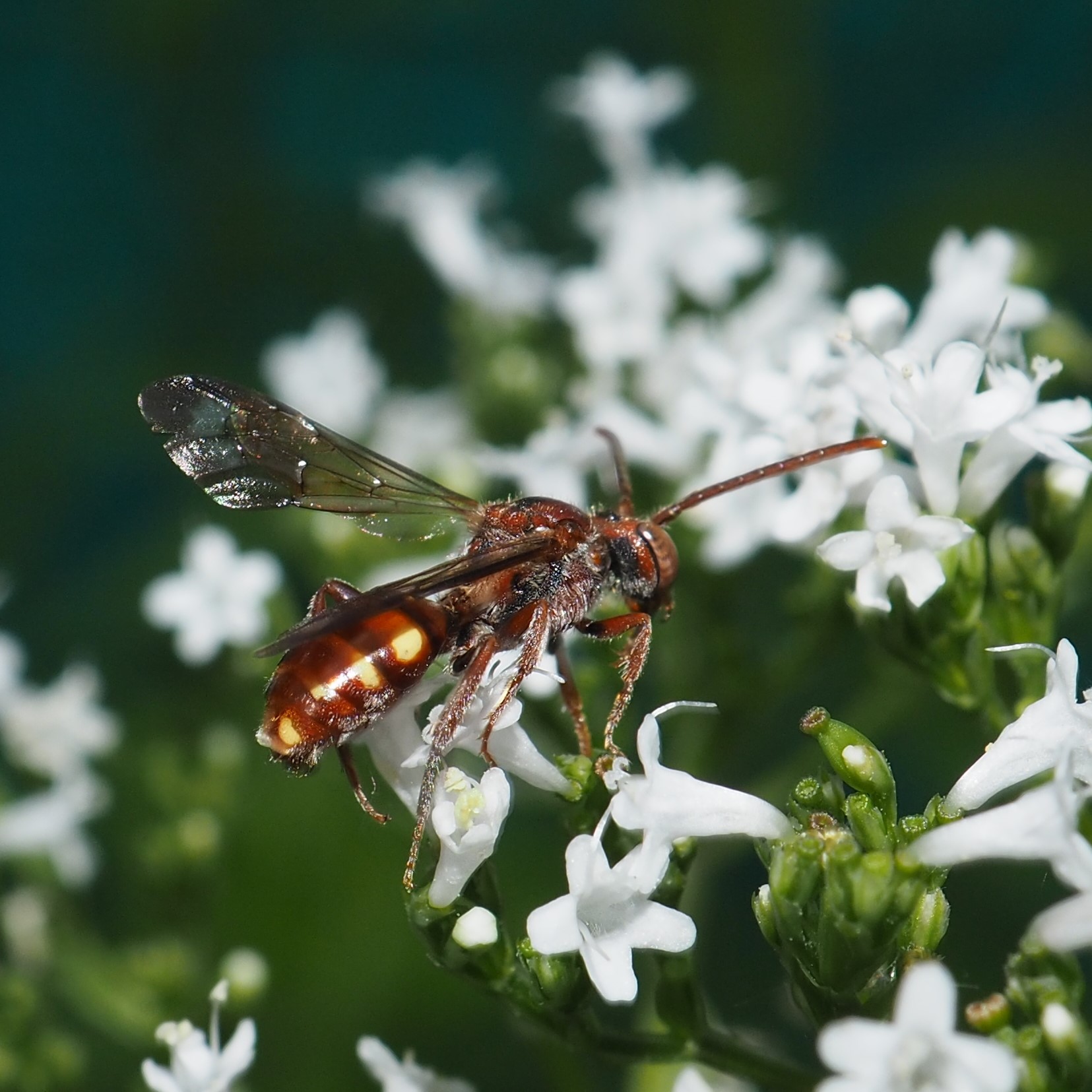
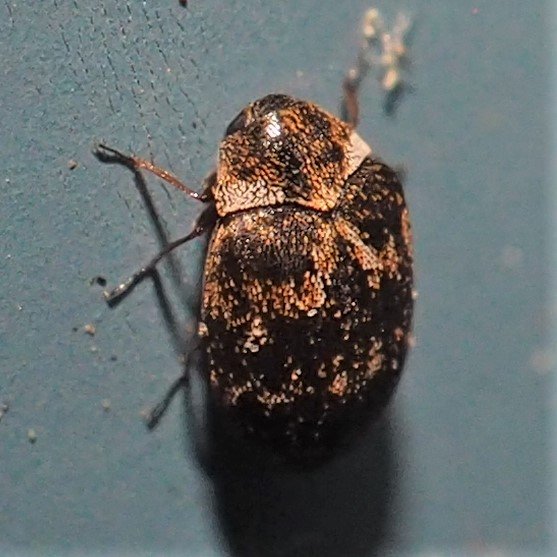
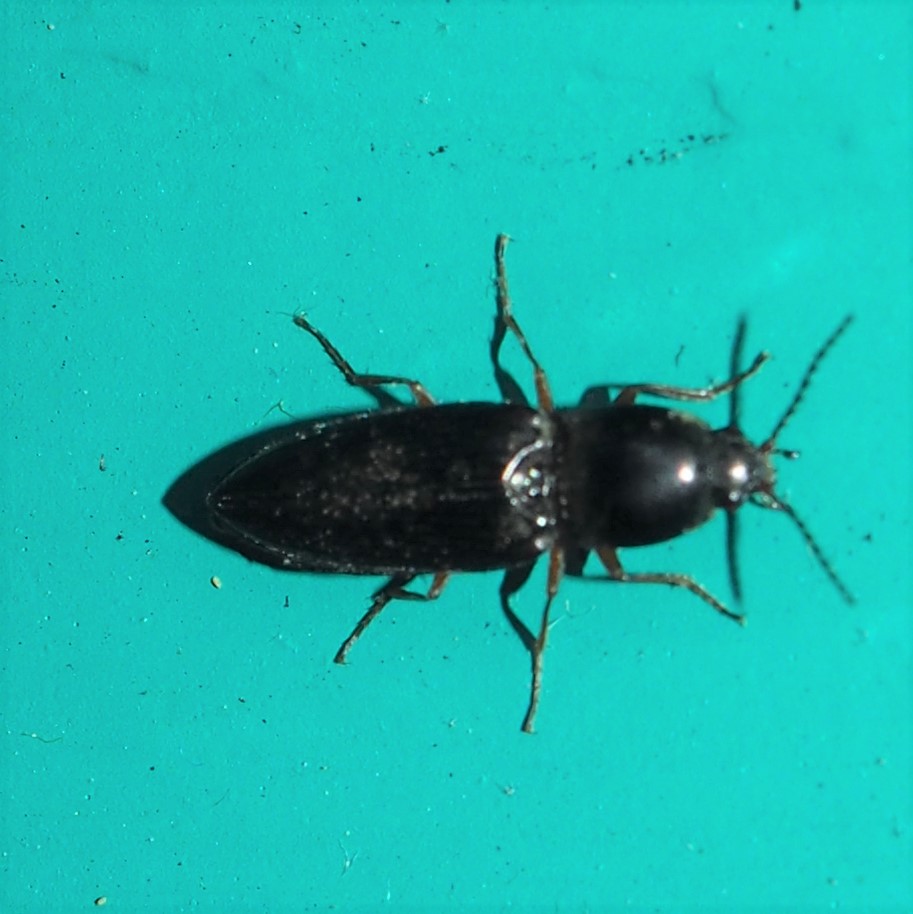
This first is the Dogwood Twig Borer Beetle. This makes sense since the Seelys have a lovely Dogwood in their South Yard, and now I discover that (must have been those Squirrels or some pesky Bird or other who dropped the seeds) MY yard also has a nice young Dogwood in the North Yard. Next is one of the pretty Tumbling Flower Beetles, this one Mordellistena trifasciata. Third is another of those Leaf Miner Beetles, Sumitrosus rosea. Remember that just a few days ago, we had another member of the Sumitrosus genus, Sumitrosus inaequalis.
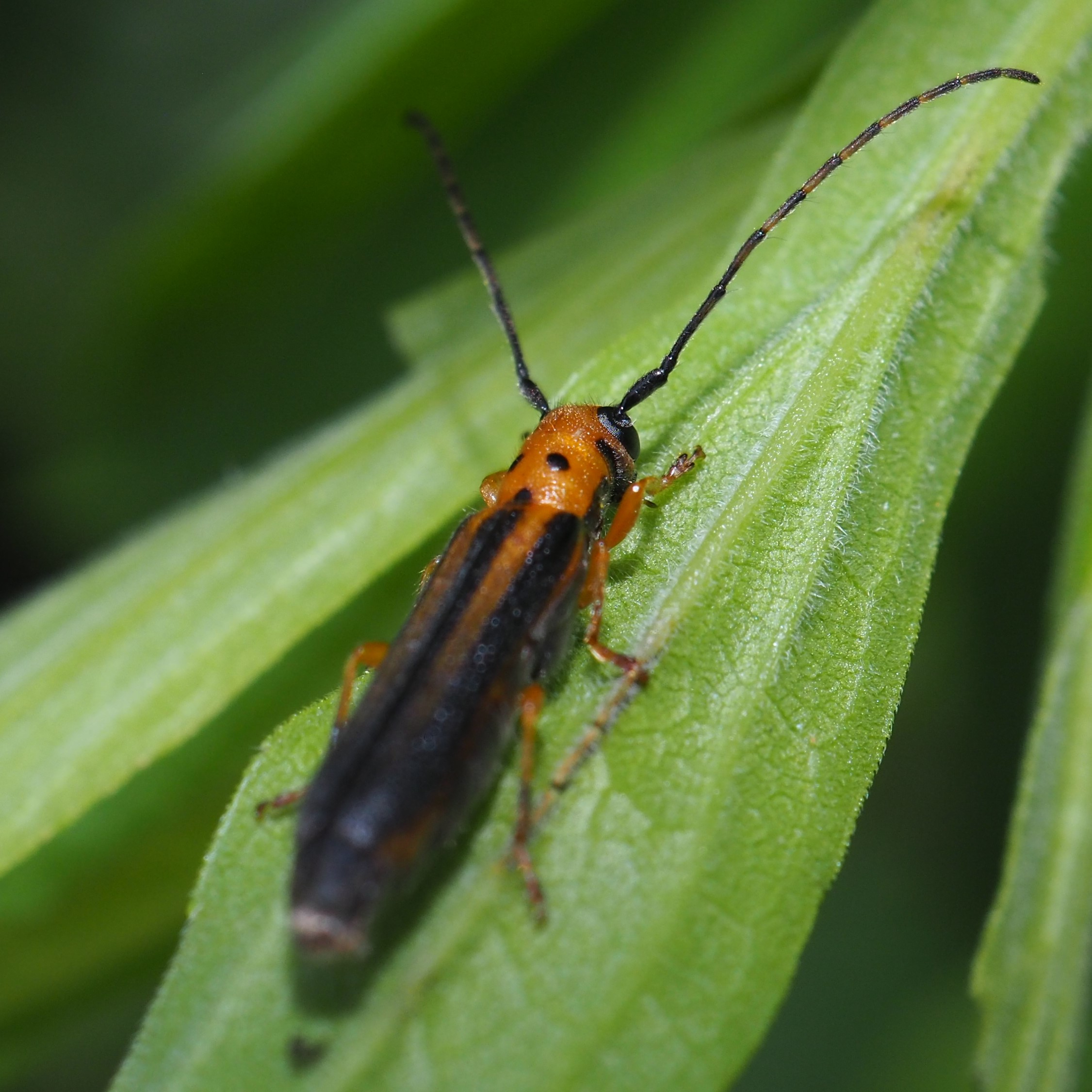

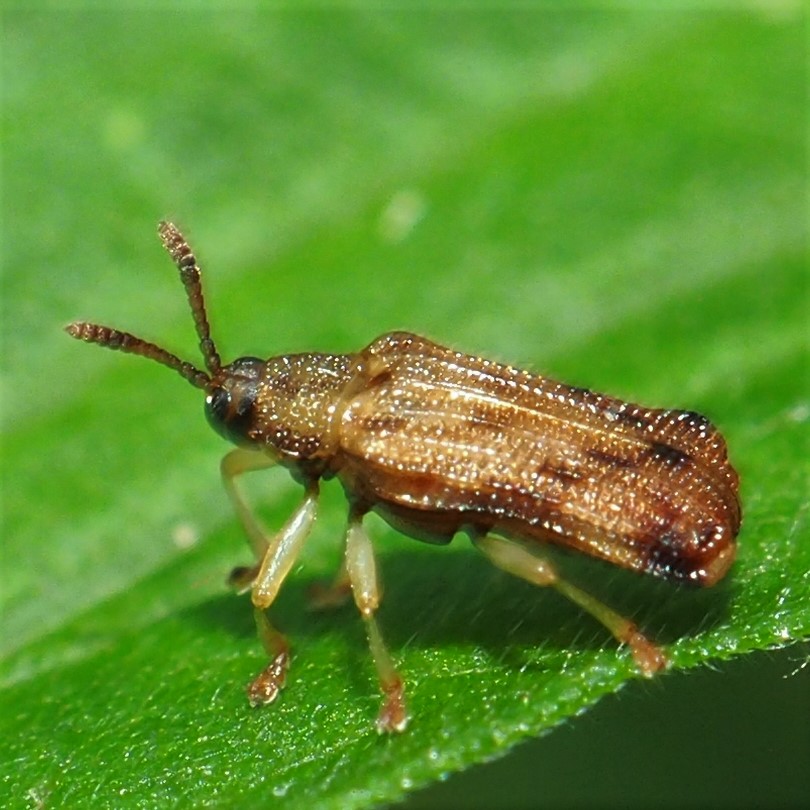
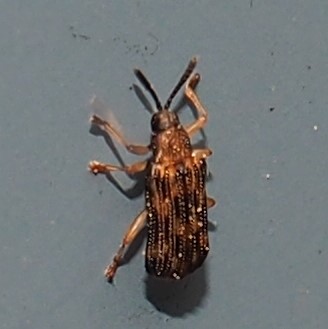
With all those aphids we've been seeing, we should expect to see some aphid fanciers, like this Polished Lady Beetle. She looks like a regular Asian Lady Beetle except for the gleaming un-spotted outer wings (elytra), and for the very aesthetic markings on her thorax.
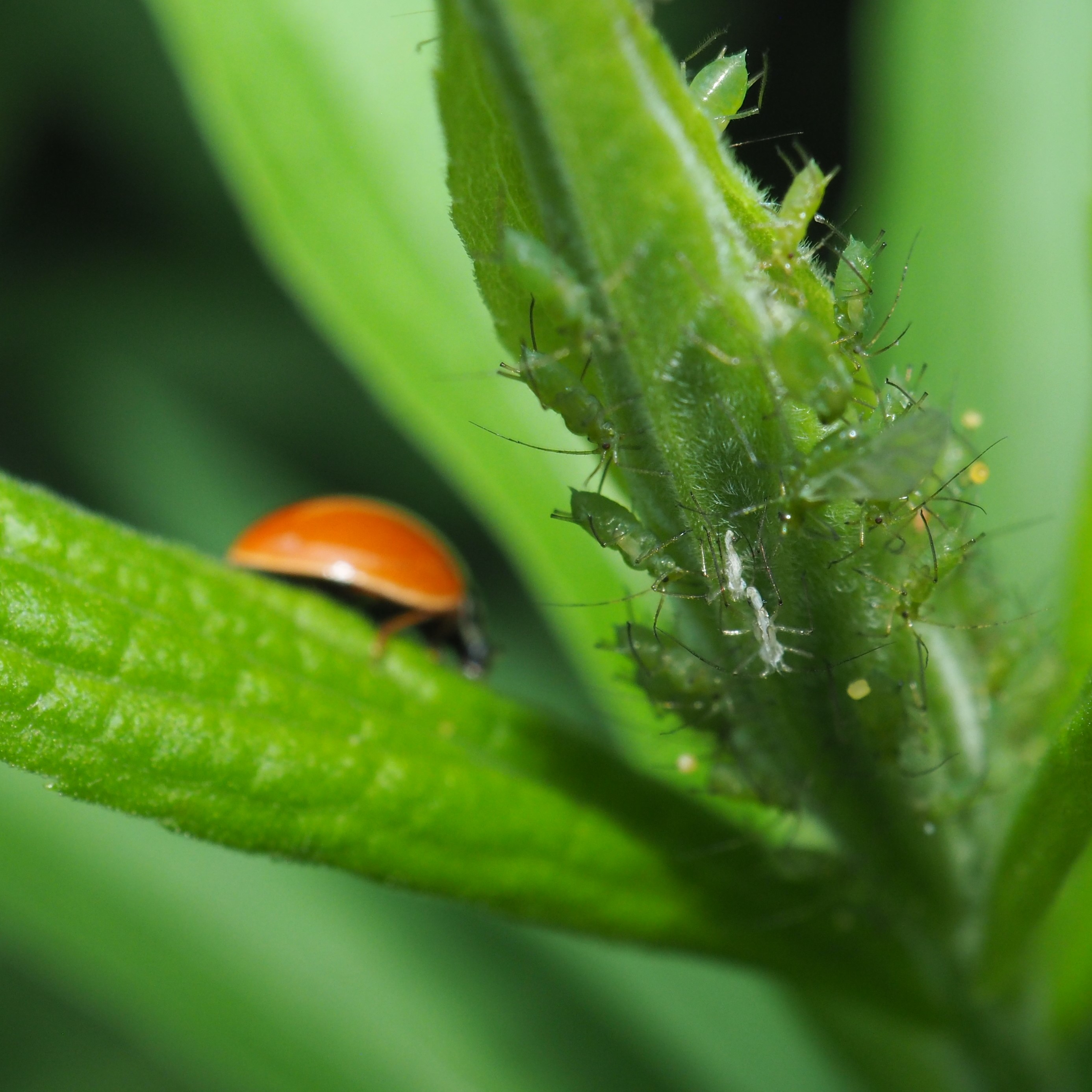
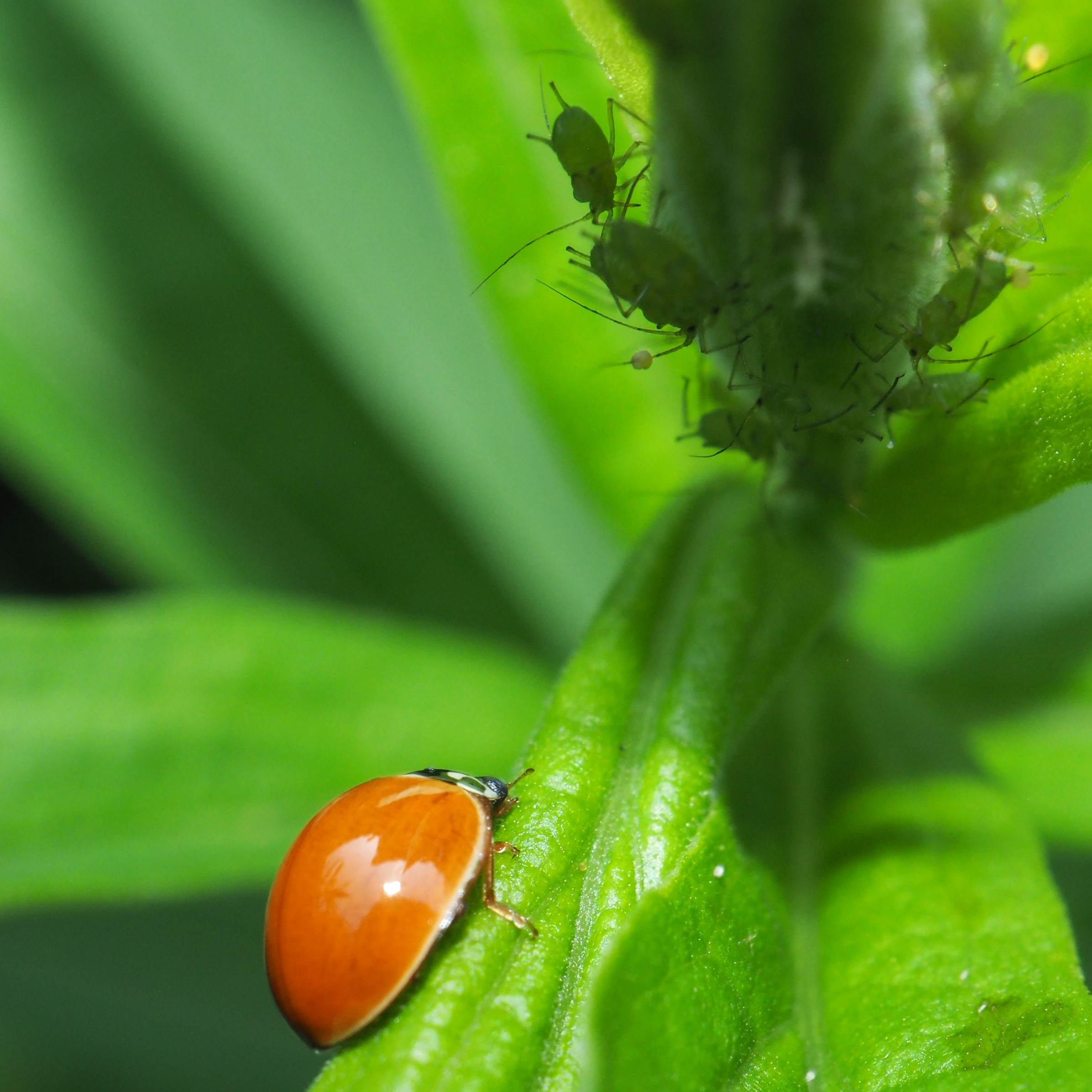
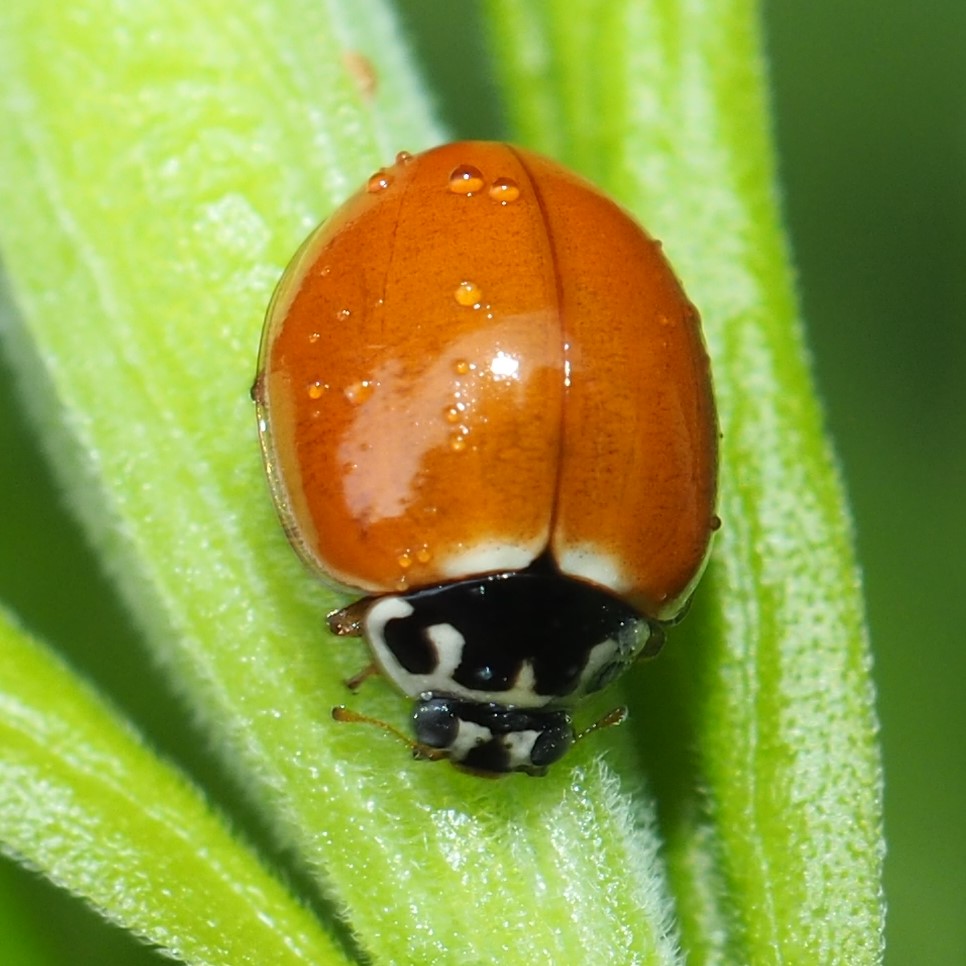
And now, as so often occurs, we once more have THREE weevils. First is a tiny grey elephant-mimic that was walking up the shop siding. Then a spotty unknown Weevil. And finally, the most common Weevil in this yard, the Redbud Bruchid, or Redbud Seed Weevil.


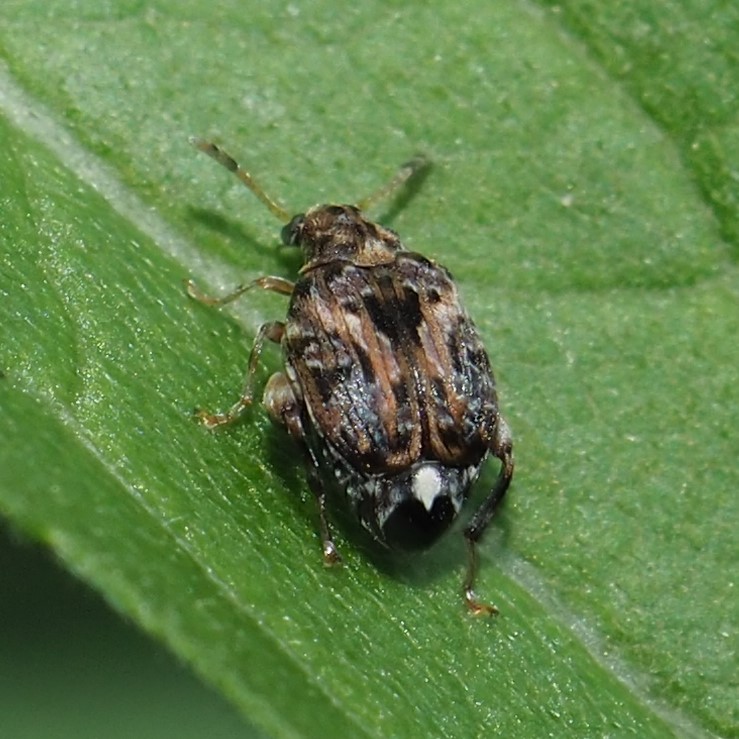
Three more Beetles (this really was a good week for them, wasn't it?). First, an unknown Beetle; second, a most ordinary of all Mystery Beetles; and third, another mystery, possibly a Marbled Fungus Beetle.



Here we are at the Bugs. Usually I start out with the Assassin Bugs, meaning the Zelus Assassin Bugs, but this week we didn't have any Zelus that I saw. BUT we did have an Assassin Bug. It really is in the Assassin Bug group, but it isn't a Zelus Bug. I almost didn't save the picture of this bug to use in this week's blog, but all of a sudden I saw its arms. They looked for all the world like those of a Praying Mantis, and so I thought "Mantisfly!" But when I tried to identify it with the ID app on iNat, it came out to be a Thread-legged Bug. This tripped a memory switch and I remembered a previous encounter with one of those. This one (the one I just saw yesterday) is Empicoris errabundus, while the one from (oh my gosh!) 2016 was Emesaya brevipennis. These two are Thread-legged Bugs, but then the family trees branch a bit and so these are related but not terribly closely related. Still they share the mantis-like arms and both use those arms to grasp their prey and suck the goodness out of them. They aren't Mantisflies. Here is a Mantisfly I saw a few years ago by surprise.

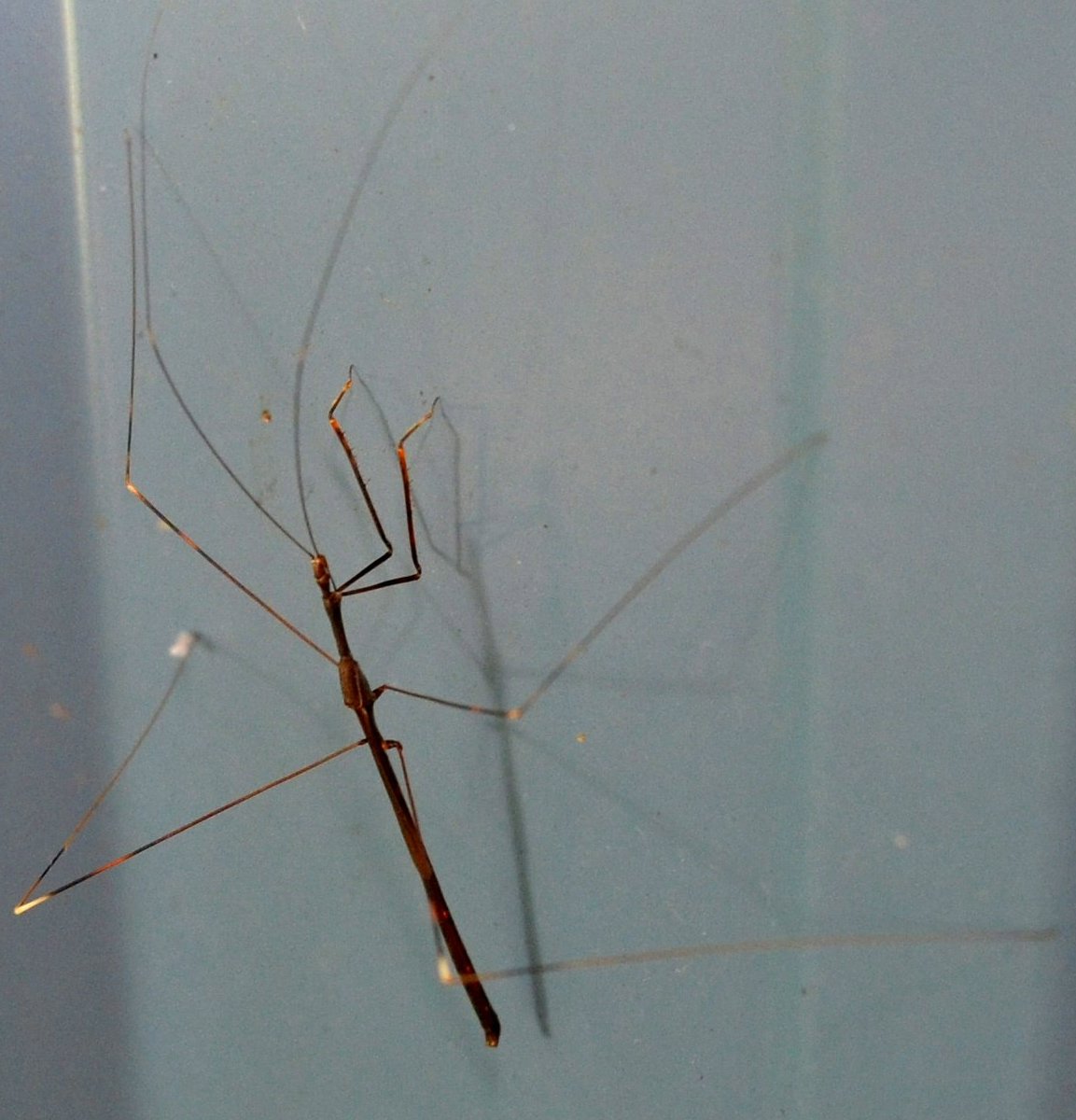
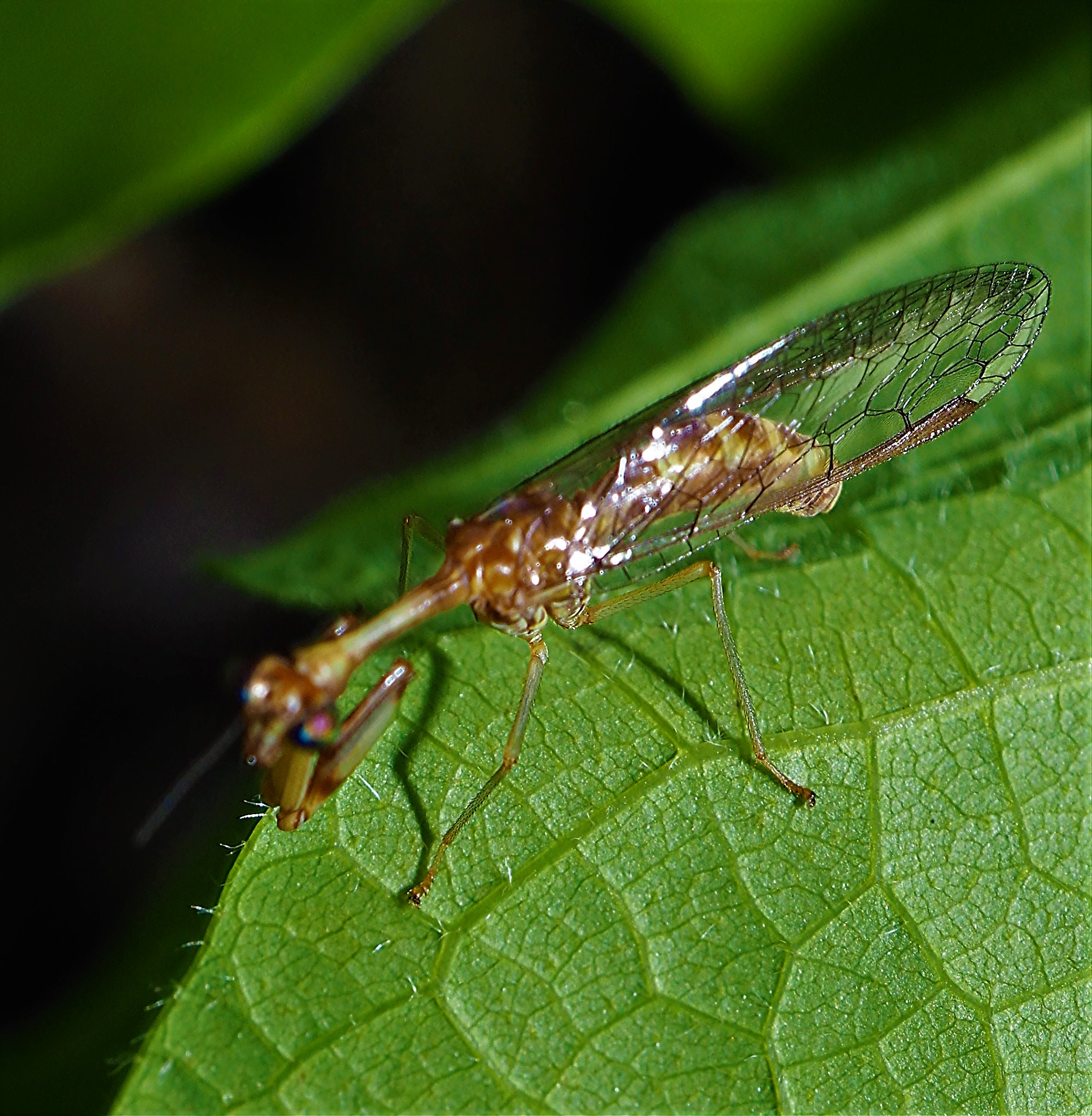
All right, we got our Assassin Bugs out of our system. Don't call me in the middle of the night if you have some lingering terrors. Please. Let's do what we usually do at this phase - look for the Leafhoppers. They are very pretty and I've never heard of any of them being mean to a human. In fact, I'm going to start out with the Graphocephala - they are stunningly beautiful and totally harmless to people. Here is one of the red and blue striped ones. The next two are some of the nymphs of members of this family.

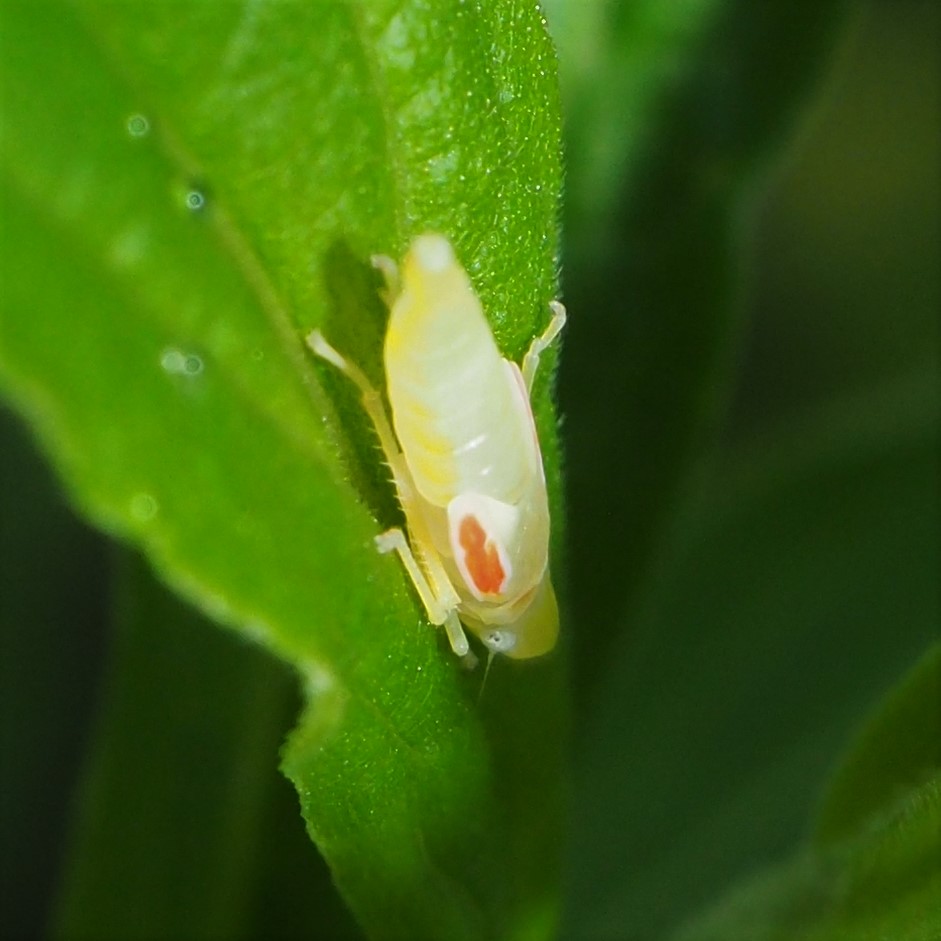
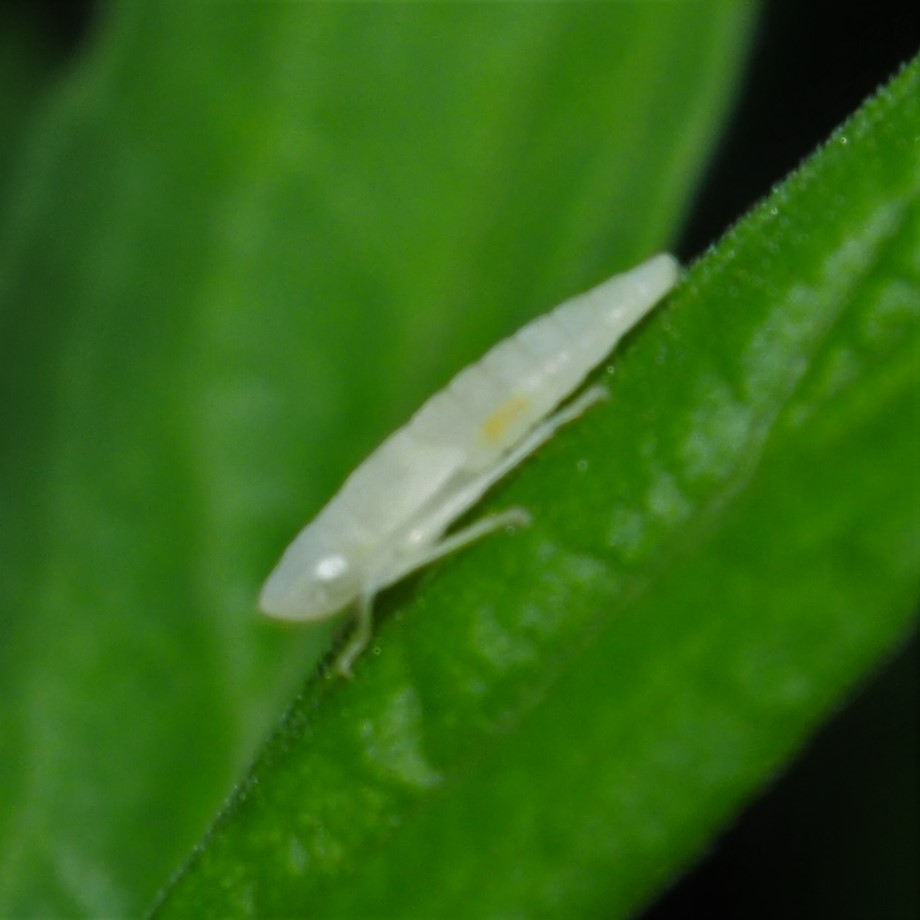
Here are some more Leafhopper Nymphs. One of the fascinating things about nymphs is how different they look from the adult they will morph into. For instance, the third one here will mature into the fourth one, a Japanese Maple Leafhopper.
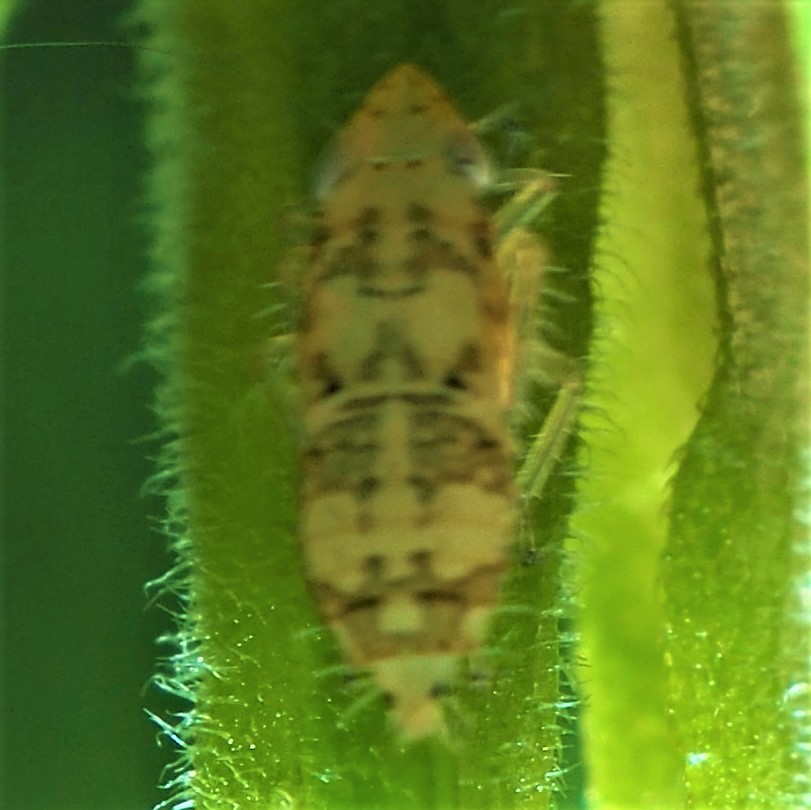
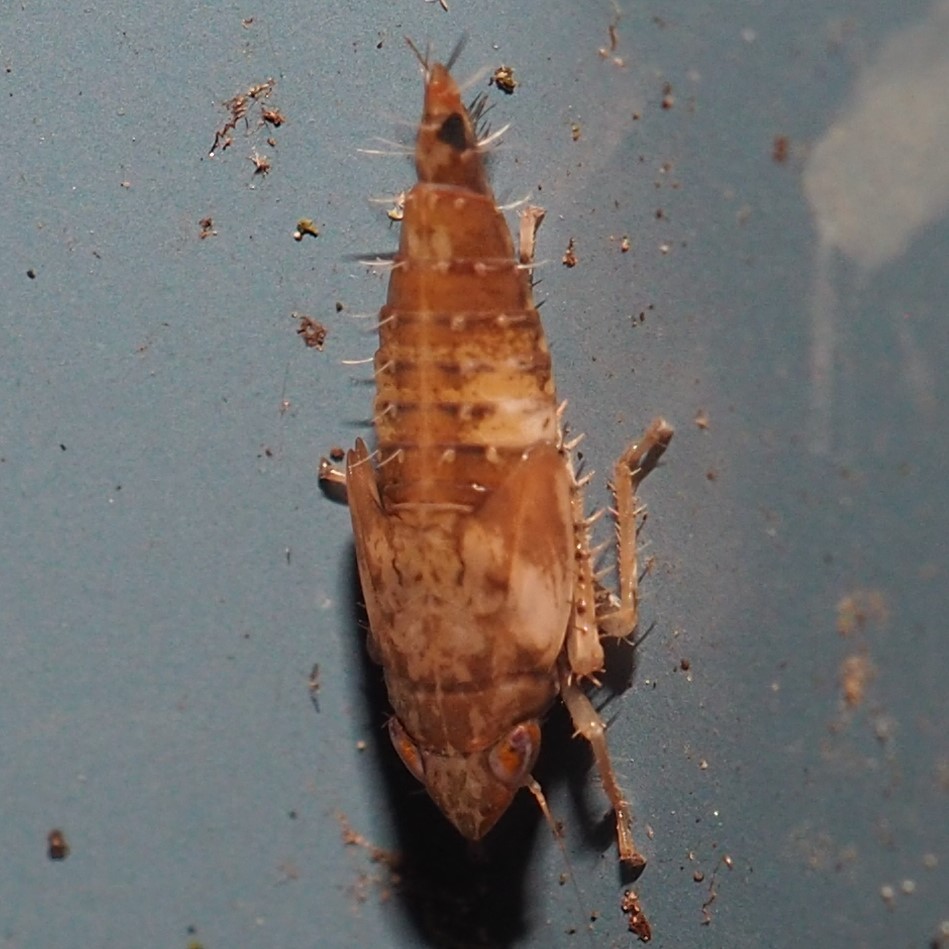
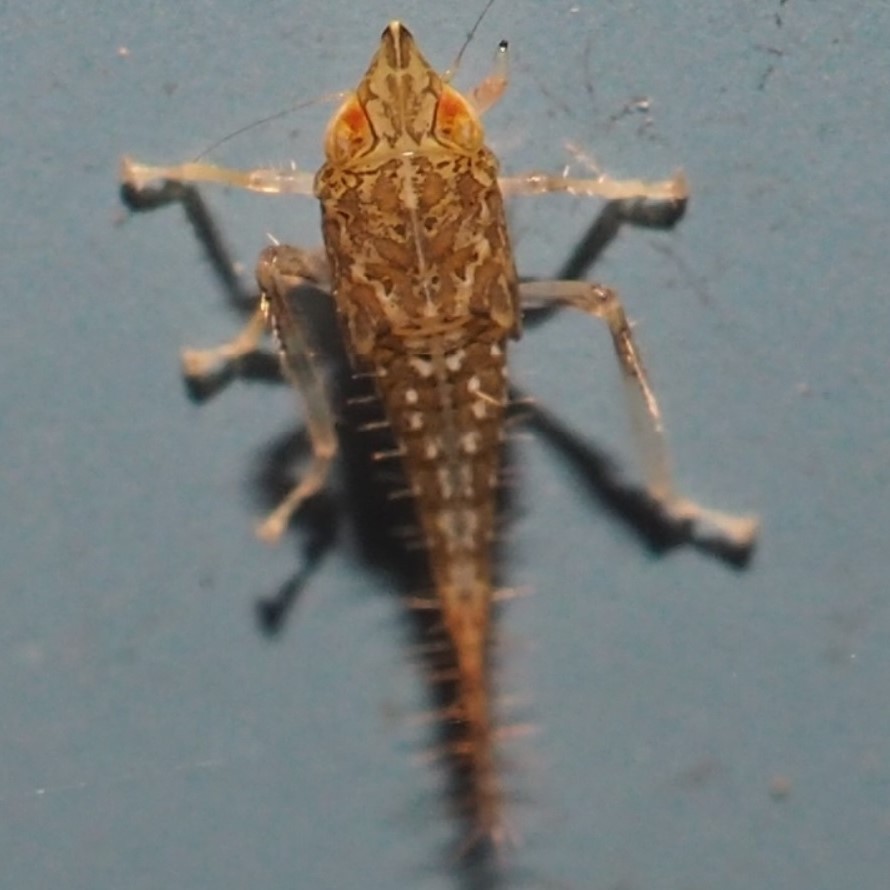
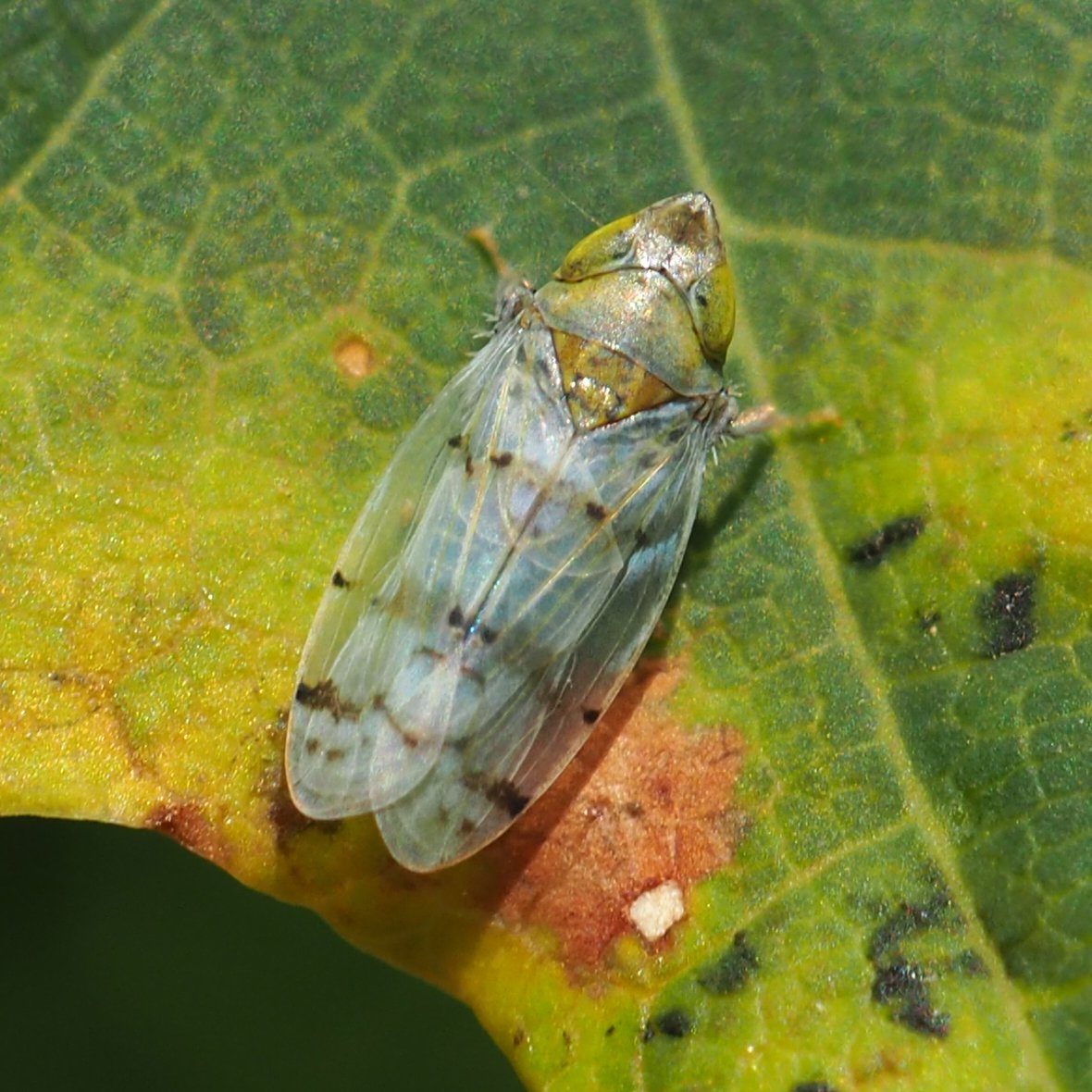
Picture 1 shows not a leafhopper, but the Meadow Spittle Bug. Next is the Aphrodes Leafhopper that we have been following. This one is in the Thistle in which we have been following a colony of Entylia carinata Treehoppers. Third is one of those Treehoppers. We have also been tracing a colony of Two-Mark Treehoppers. They have gradually been morphing into adults (picture 4). By the way, the reason they are called "Two-Mark" Treehoppers is those two yellow dots on the back.

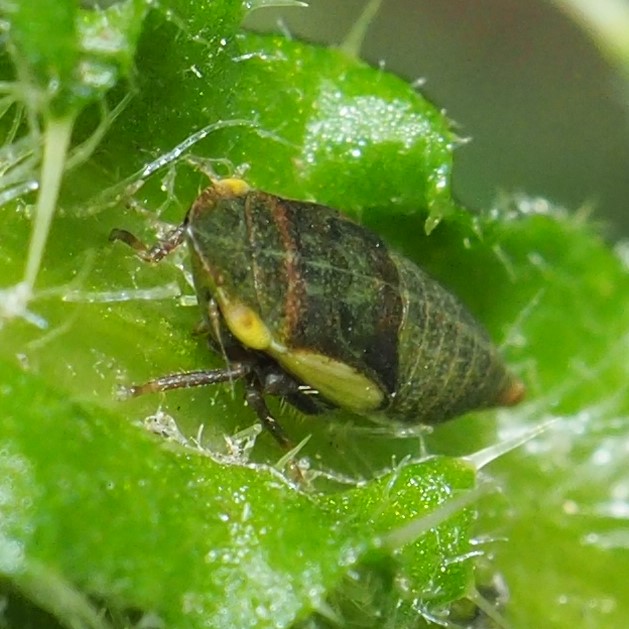


Back to the garden, we've had a number of Plant Bugs and a few others. I'm not sure what this first one is. Second is not a Plant Bug but a mystery right now. Third is the Obscure Plant Bug - what a fitting name that seems to be!
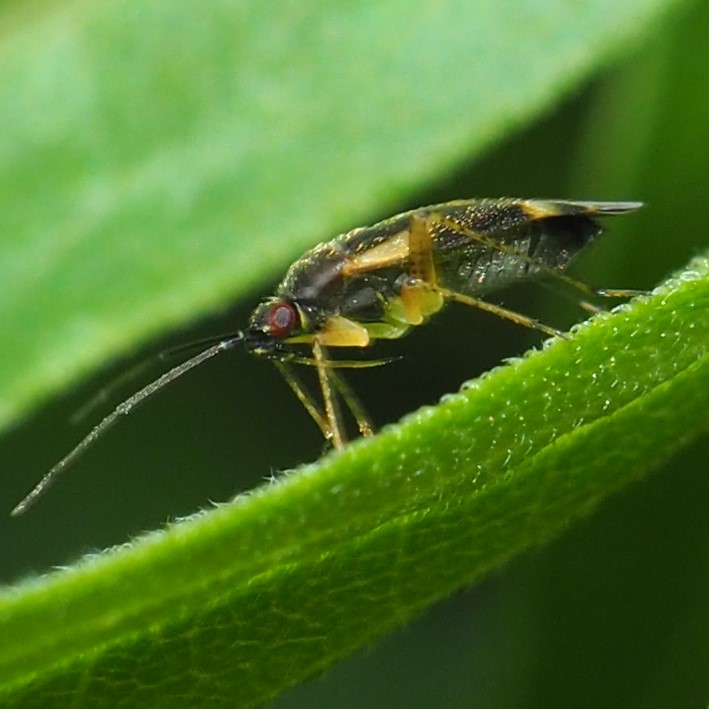

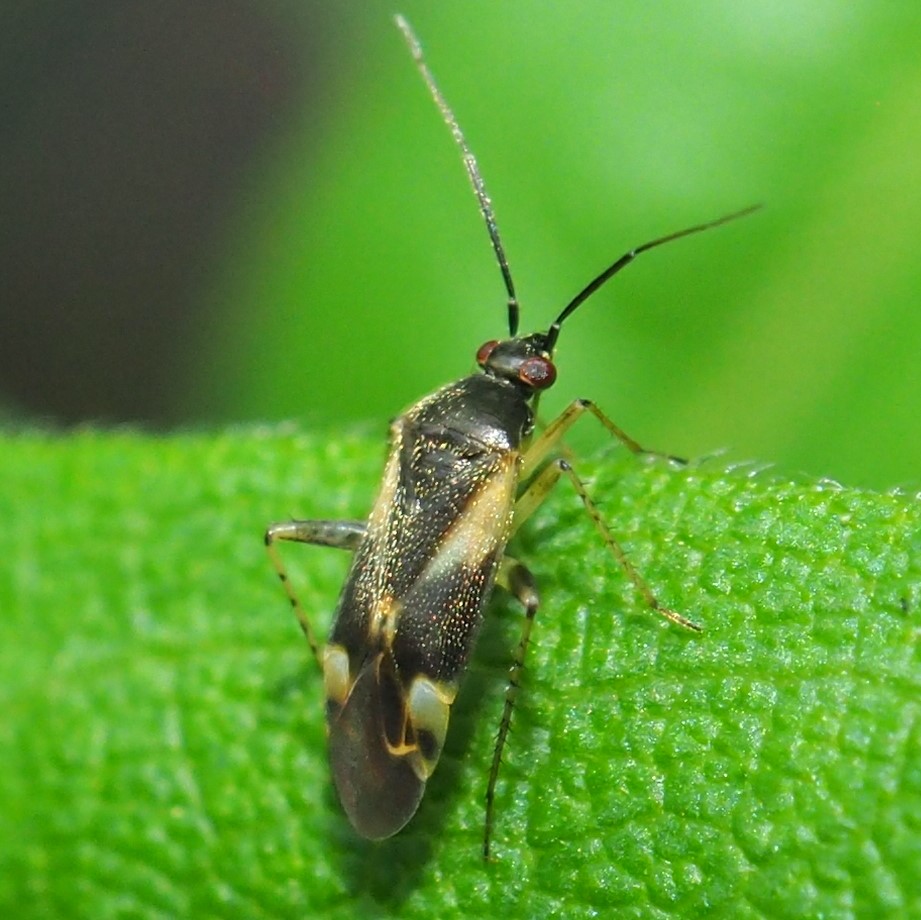
First is that mosaicized pinkish bug we saw last week. Its wings are coming along. It was found this time in one of the lower leaves of that plant with the orange and green Aphids. Second is a beautiful blue Bug.


I'm sorry to say this but I can't tell a grasshopper from a cricket from a katydid when they are nymphs. This first green fellow is one or the other. The one exception is this second little creature, which I have memorized to be the nymph of a Scudderian Bush Cricket. Third looks like a grasshopper to me, but I dasn't breathe the word, just to say it is either a Grasshopper, a Cricket or a Katydid nymph.


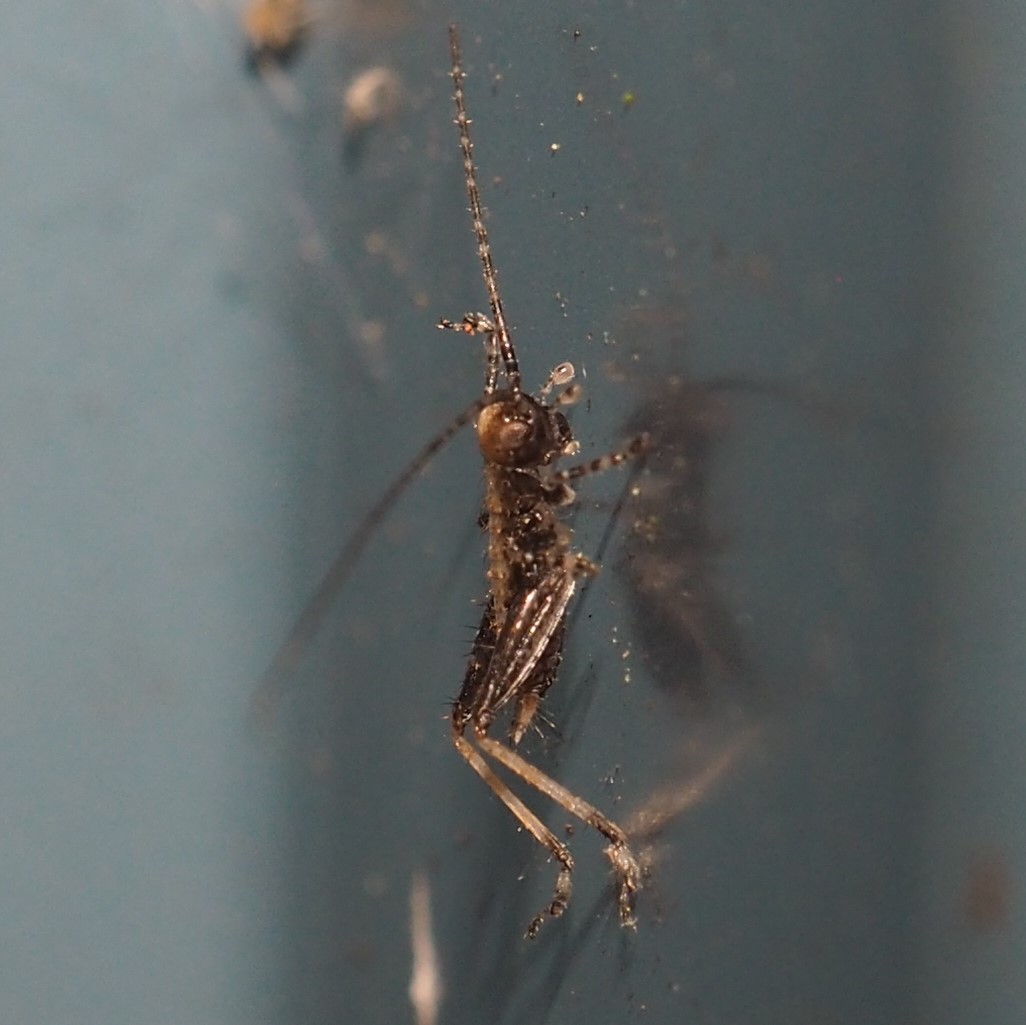
This Damselfly is one of the Spreadwings, but more noticeable is the string of little red round mites along its "neck". Second is a female Common White-tailed Skimmer. I think the third Dragonfly is the Eastern Pondhawk, and probably a male since its tail is mostly blue already. I took its picture from quite a distance and was lucky to get this much detail. :-)
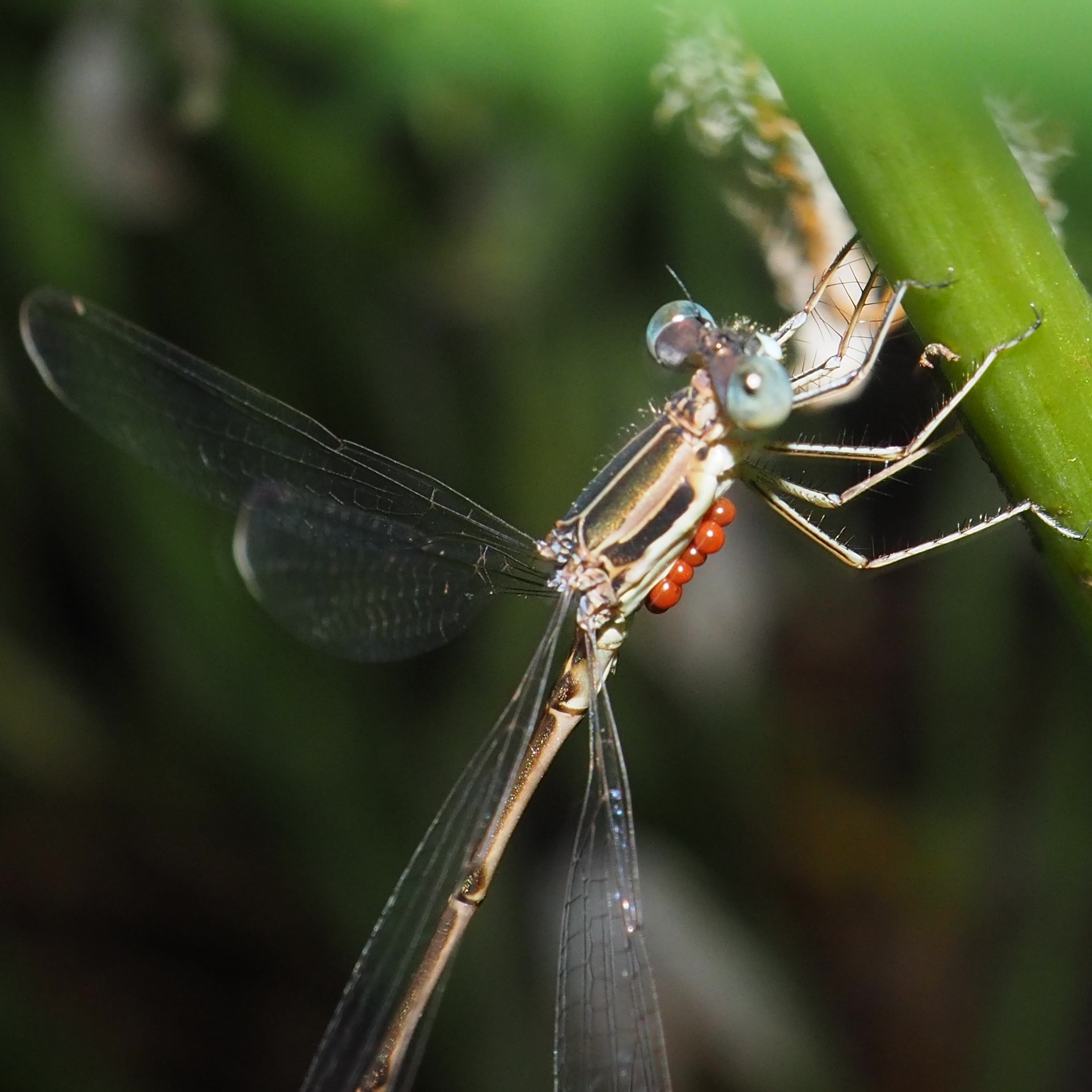


Friends of the Critters: if you ever run out of bugs to shoot (with your camera), write to your Fairy Godmom and mention the dearth, and she may say: go to your Aster patch, and look straight down into the center. You may see something black or dark brown in there. If you are really lucky you might see two prongs. Shoot into the center and maybe pull the outer leaves apart a bit and shoot again. The dark Something may become annoyed but by then you may have a nice picture of ..... an Earwig! I asked an expert once for some suggestions on something nice to say about Earwigs and he said that the mother Earwig is particularly conscientious about keeping her babies safe for quite some time after they hatch. Good enough for me. There are a few species of them, none of which sew up your ears.
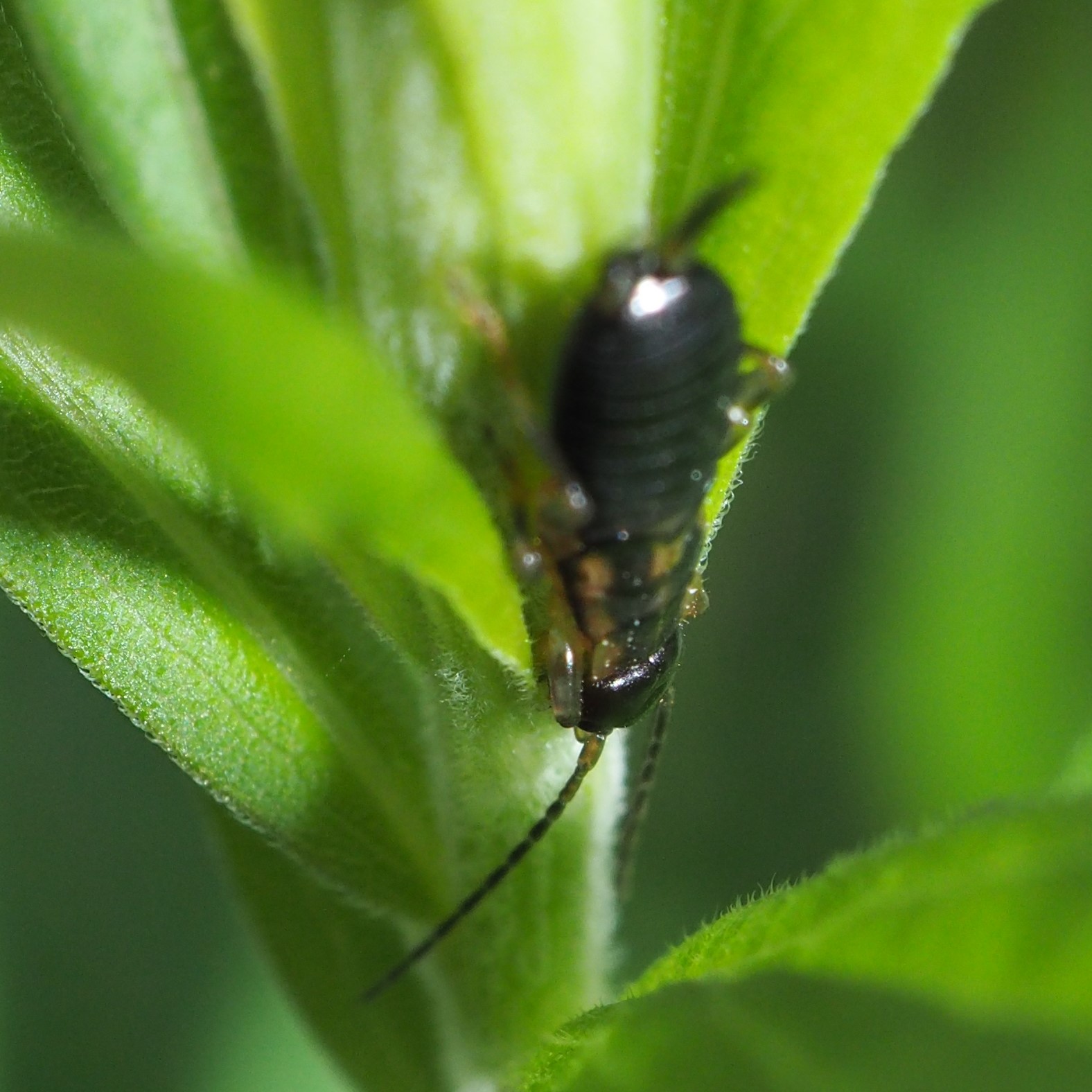
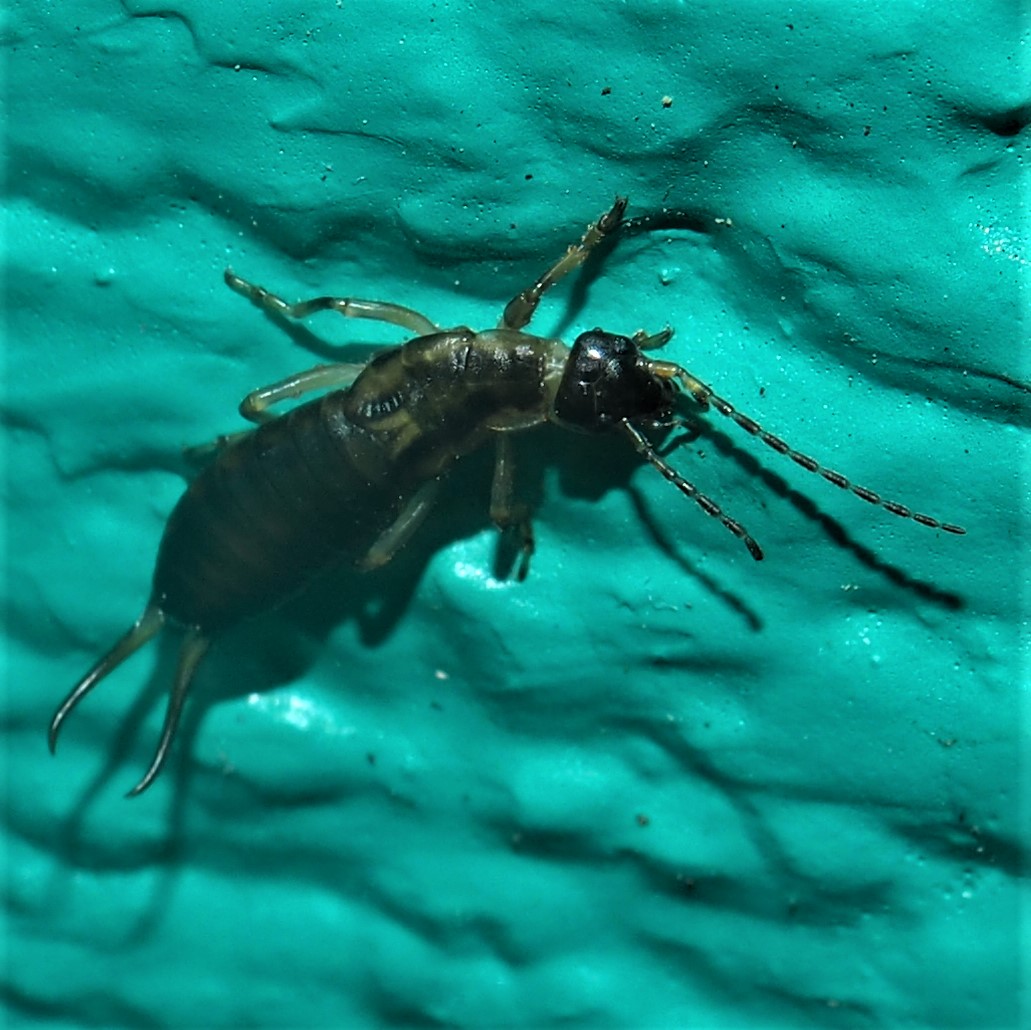

I do believe we've reached the Flies. Have you noticed that the Spring Specials - Midges and Fungus Gnats - are fewer these days? So let's see what is hanging around. First, a pink Fruit Fly with spotty wings. Then a beautiful green-eyed Fly (last two shots).
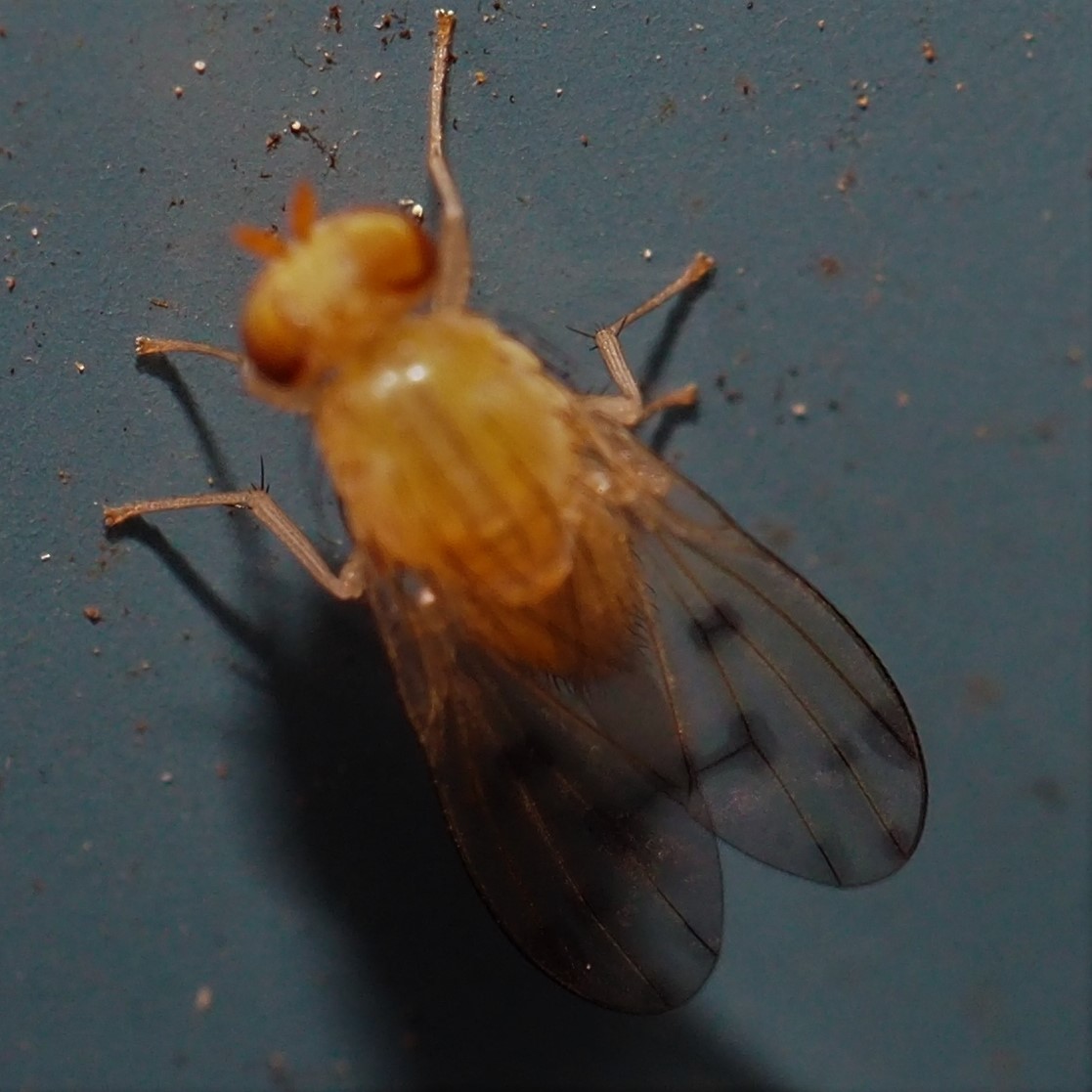


This little fly is so little most people miss its iridescent green color. Its hairy cousin (picture 2) is somewhat shockingly hirsute (Latin for hair suit). Third I think is one of the Hover Flies, but we can't see through these wings to see the pattern on the abdomen.

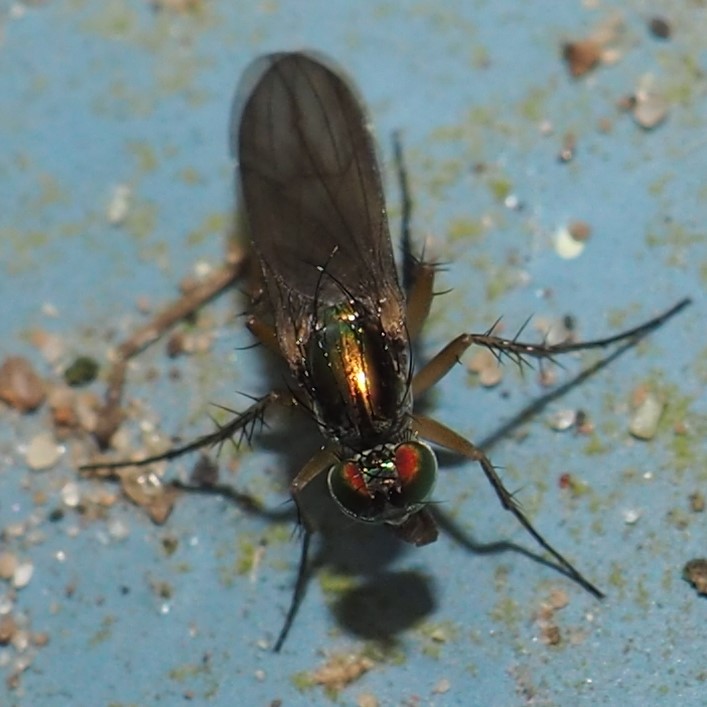

I still don't know what these two little black Flies are. But after a lot of looking through a lot of photos, I found this one - it doesn't seem to have a common name but its scientific name is Trypetisoma sticticum. Aren't the wings amazing?
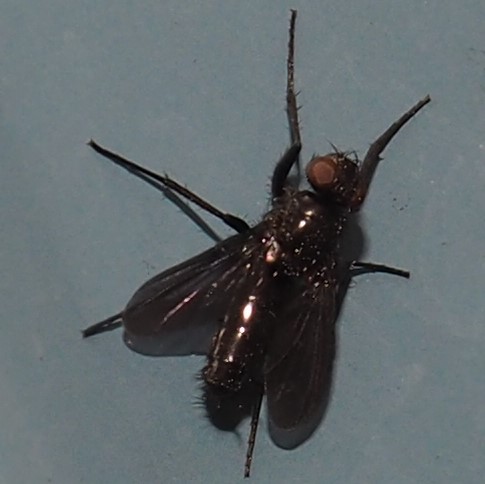

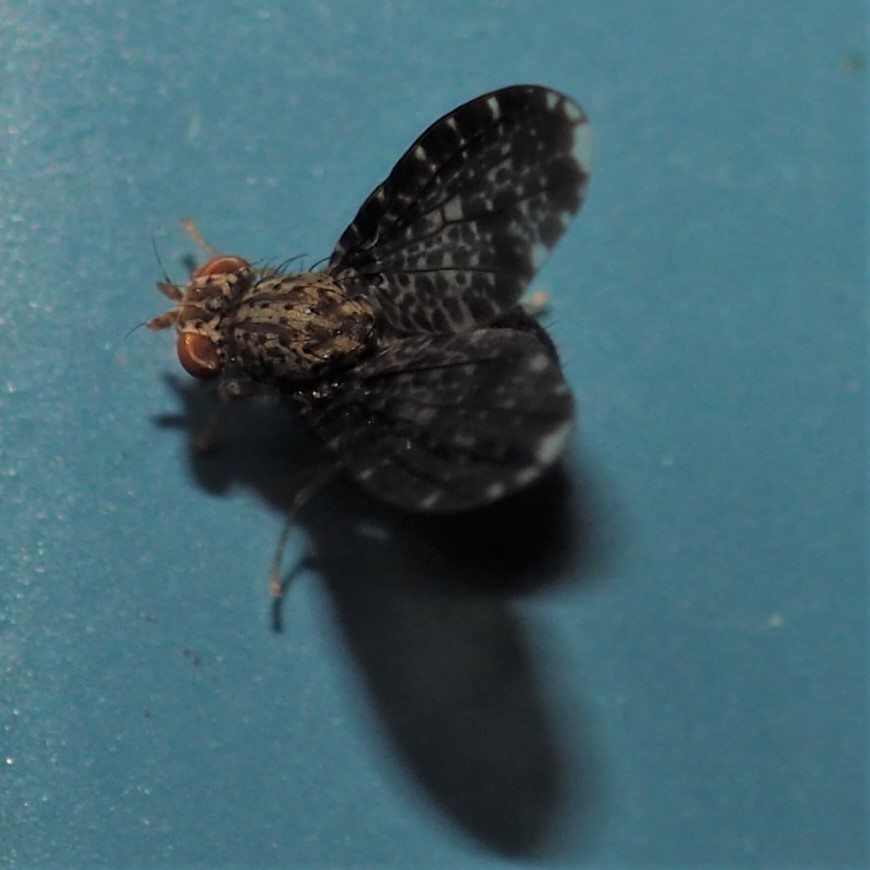
This little teensy one isn't ID'ed yet, nor is this little pinkish one. But I may have fibbed when I said there weren't any Midges this week. If you asked most people what number 3 is, I'll bet most would say, "It's a Fly!" and they would all be right. Number 4 is such a delicate little creature, I hope I can ID it (meaning, find someone who knows Flies to identify it!) one of these days.
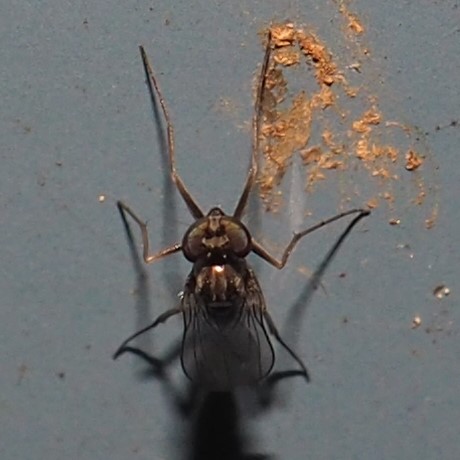
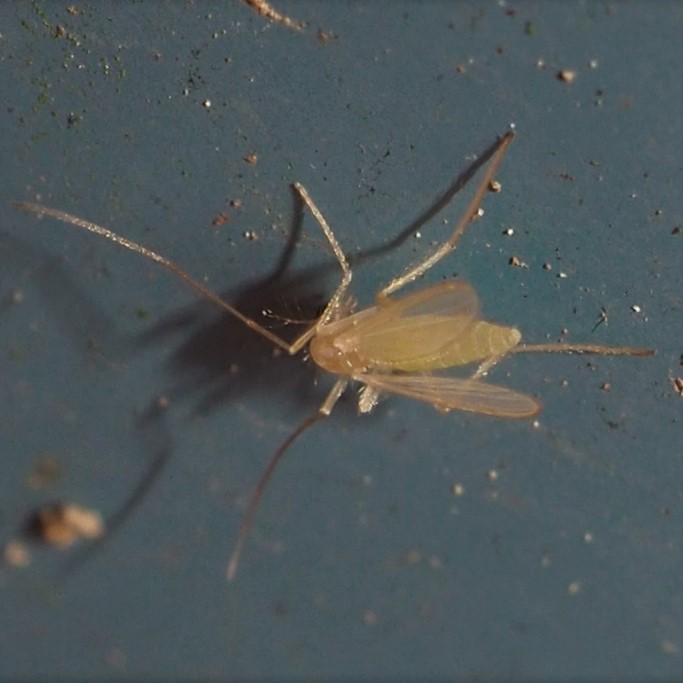


Probably by now most people know this one is a Robber Fly (first two pictures). Even if they don't, they get a kind of feeling about the way it carries its body, lying (standing) in wait for a victim. Third is a pair of Leaf-miner Flies of subfamily Agromyzinae, mating on what looks like an Aster leaf.


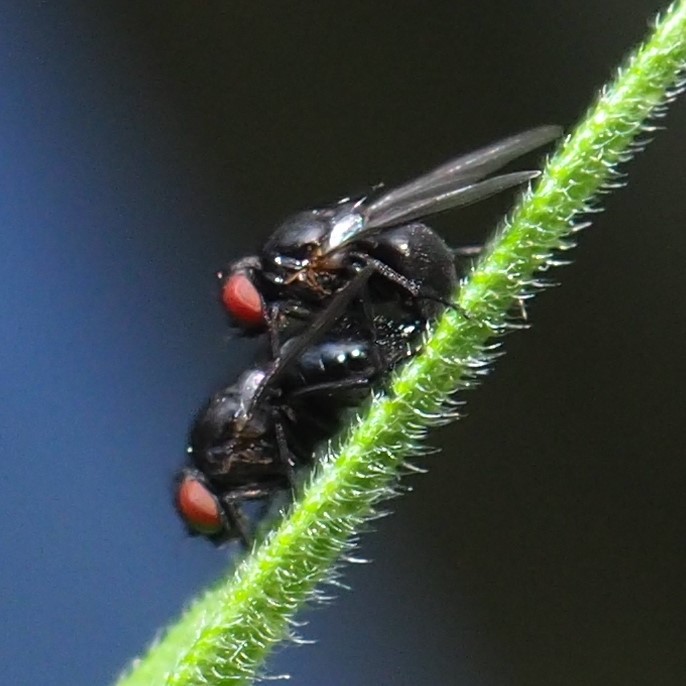
Maybe it's time to wander through some Flowers for a while. As you must have gathered after many years, my Garden consists more of a collection of little flowers that look pretty one at a time. I think so anyway. Since I don't have many very large showy blossoms, I've learned to enjoy the close-up view of what I DO have. Here's an atypical shot of TWO Crane's Bill Geranium blooms. What a color! A Purple spiderwort with a rare cluster of Four Blossoms. And a single daisy-like flower on this unknown plant.



Another kind of daisy by the Northwest corner of the shop. That Deptford Pink blossom - you can see how small it really is by the patch of pallid pink that is my fat finger, not even my thumb. A single White Clover flower.
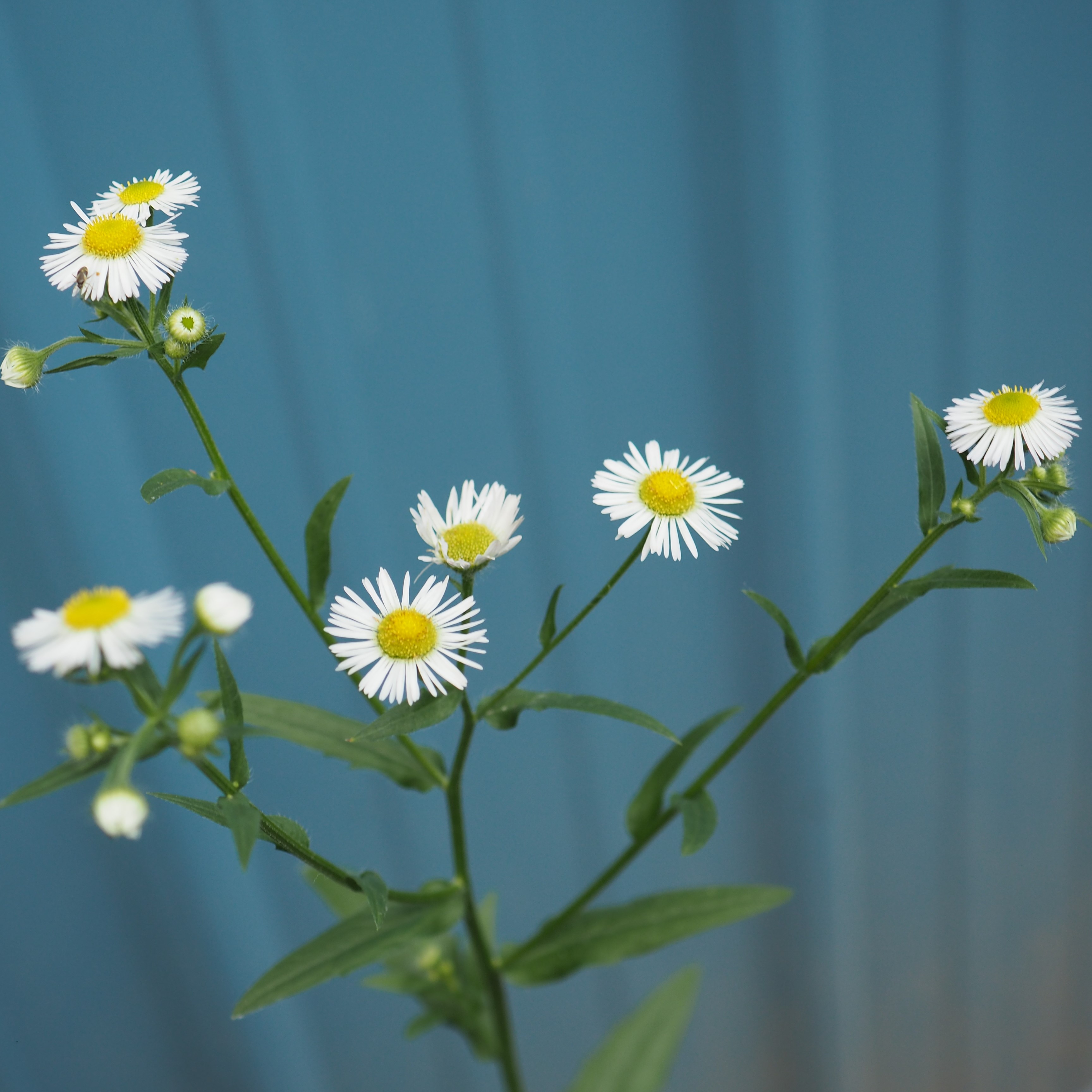


We were lucky in Moths this week. Most were very very small, but all had a certain je n'sais pas that made them beautiful in the small. I don't know yet all or most of the ID's. But here they are. First is the Gray Archips Moth (Archips grisea); then the Grape Plume Moth; then the Triangle-marked Twirler Moth.
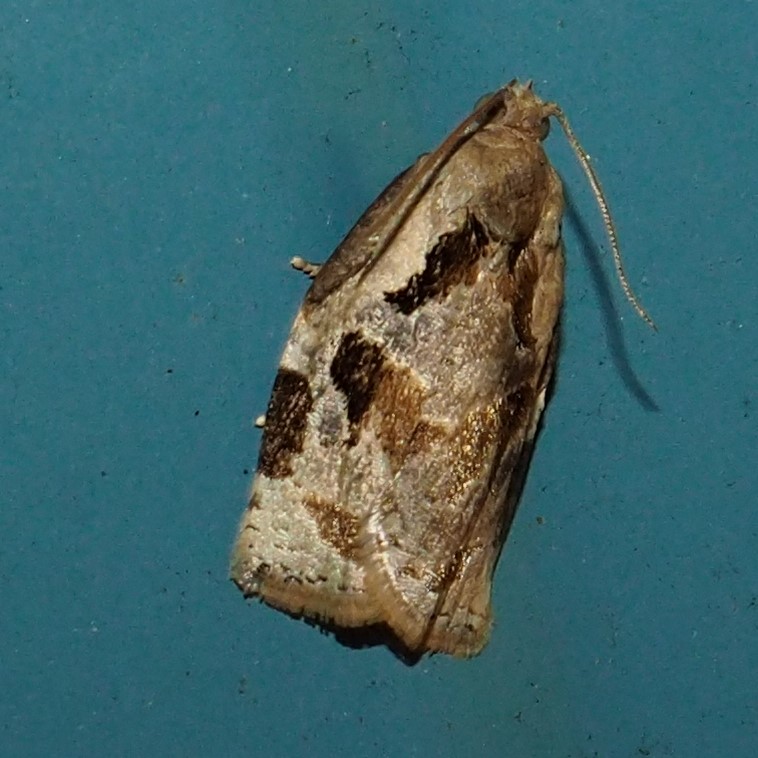

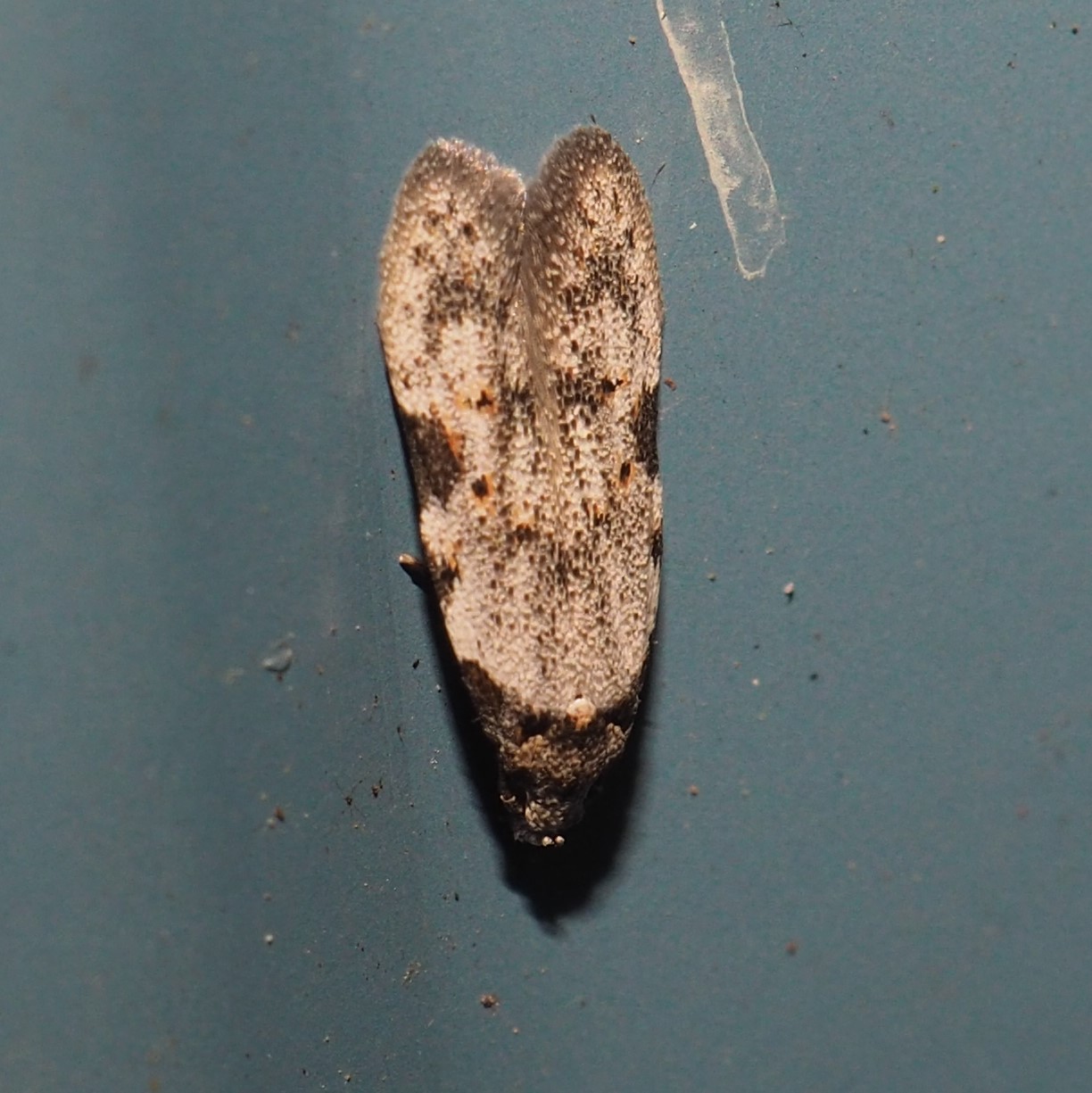
Now we have one more unknown Moth and our old friend the Porcelain Gray. We also have one left-over Mayfly. It may be the Northern Summer Mayfly, one of which we have already seen.

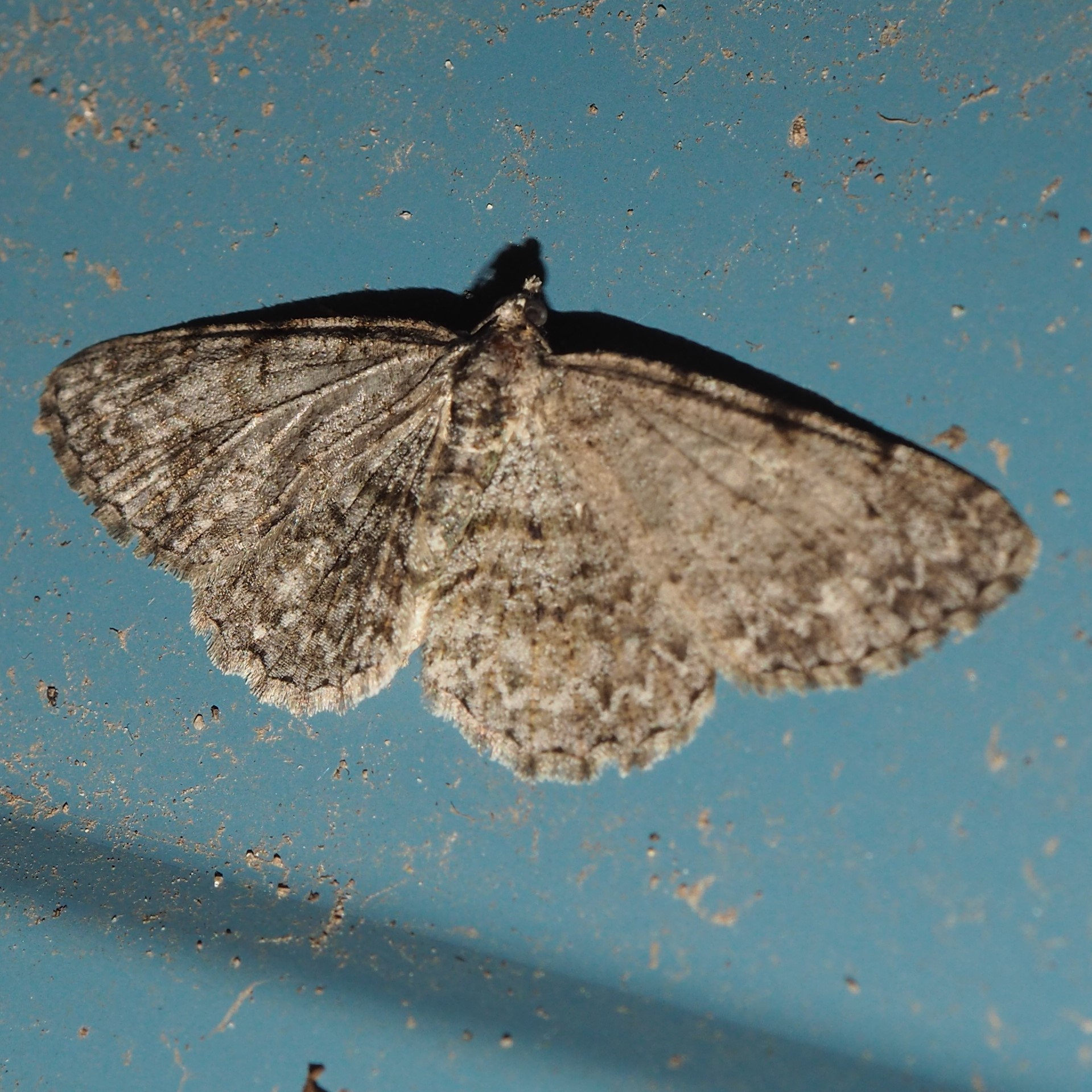
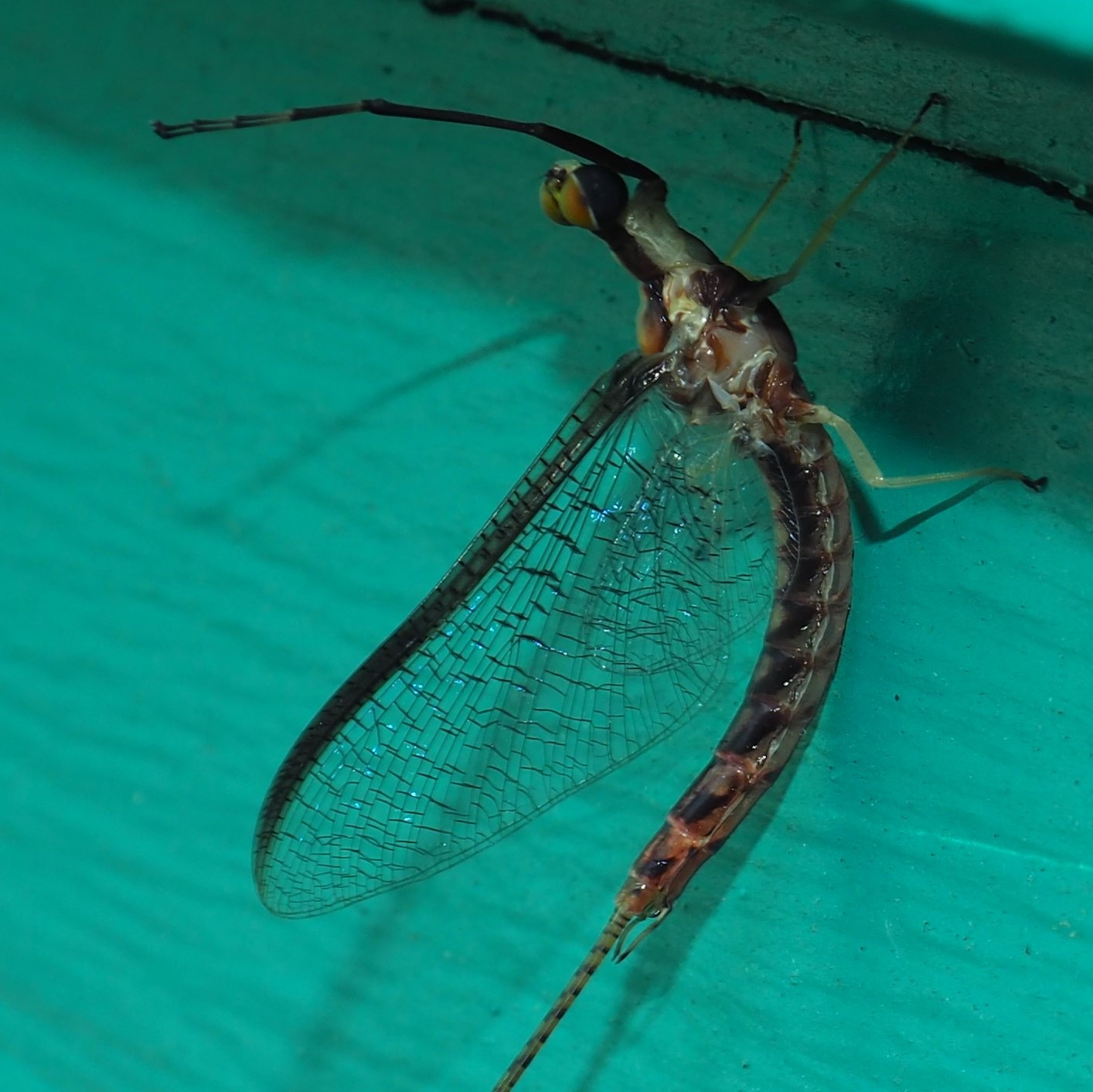
Let's see what Spiders we were lucky enough to find. First we have a Cellar Spider, probably of genus Pholcus. Then of course at least one Cobweb Spider. And last, a Running Crab Spider.

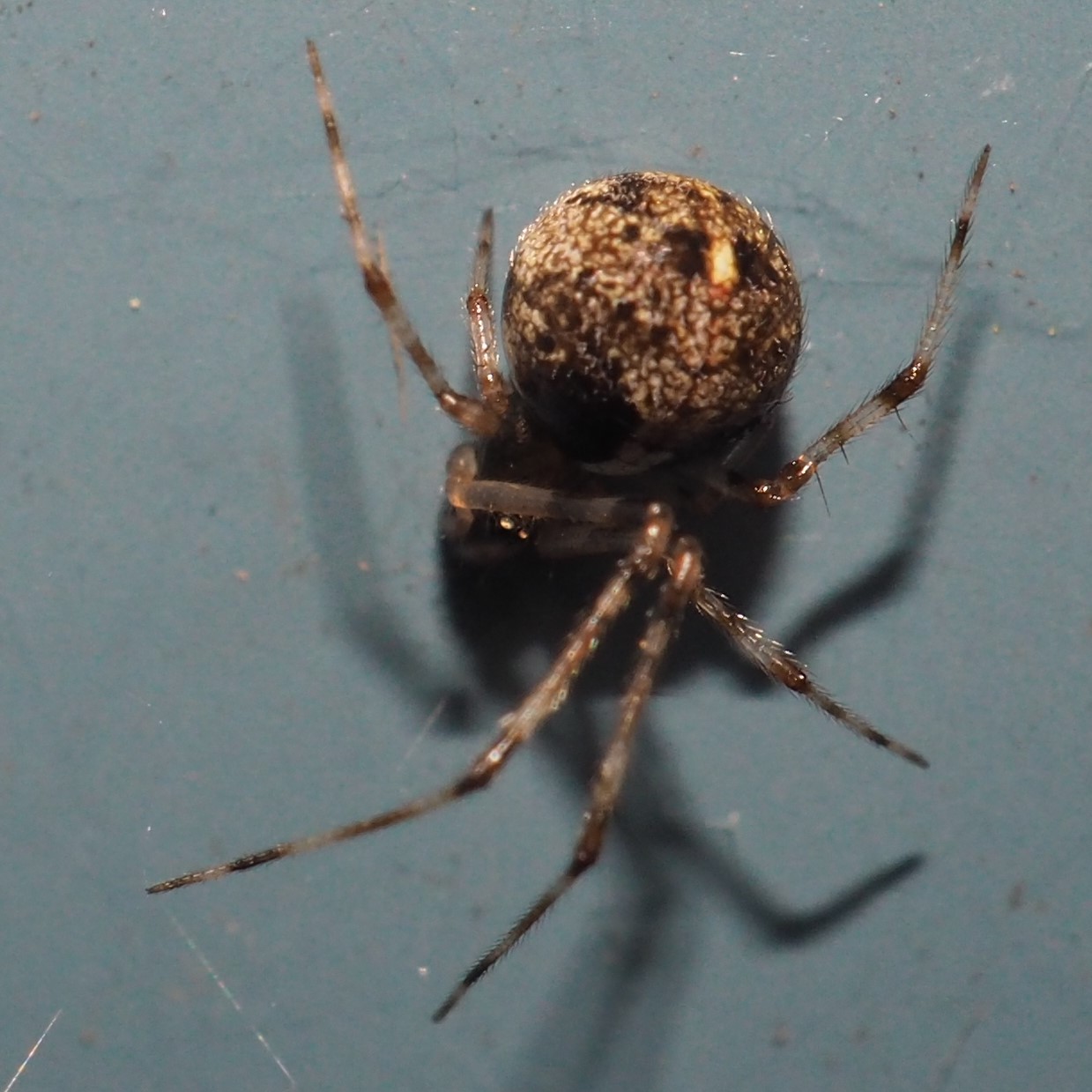

We had our one Jumping Spider, Naphrys pulex, and another that might also be N. pulex from a full frontal view.
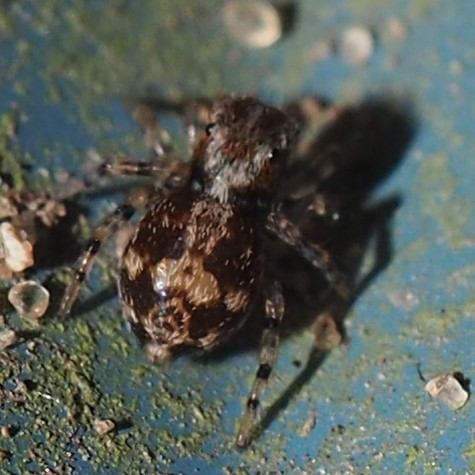

I didn't recognize my favorite Spider, Mimetus puritanus, the Common Pirate Spider until I was cropping it and saw the sliver of its funky smile and then its signature head ornament. Here are two copies of an unfamiliar Spider, unless it's the Common House Spider in an unusual angle and color combo.

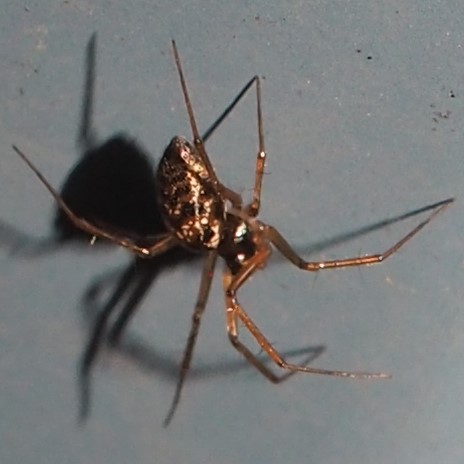
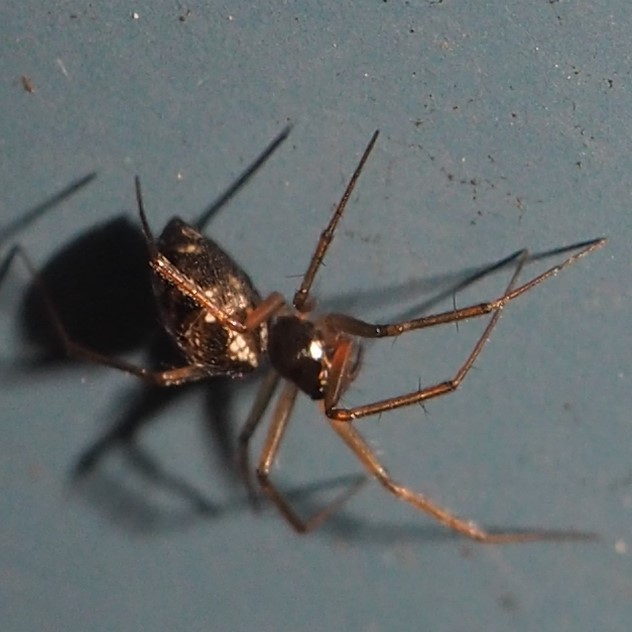
This character was hanging around on the thistle where I was checking out the Keeled Treehoppers. I didn't see at first the two white dots that mark Mangora placida. Third is another unknown Spider that was near.
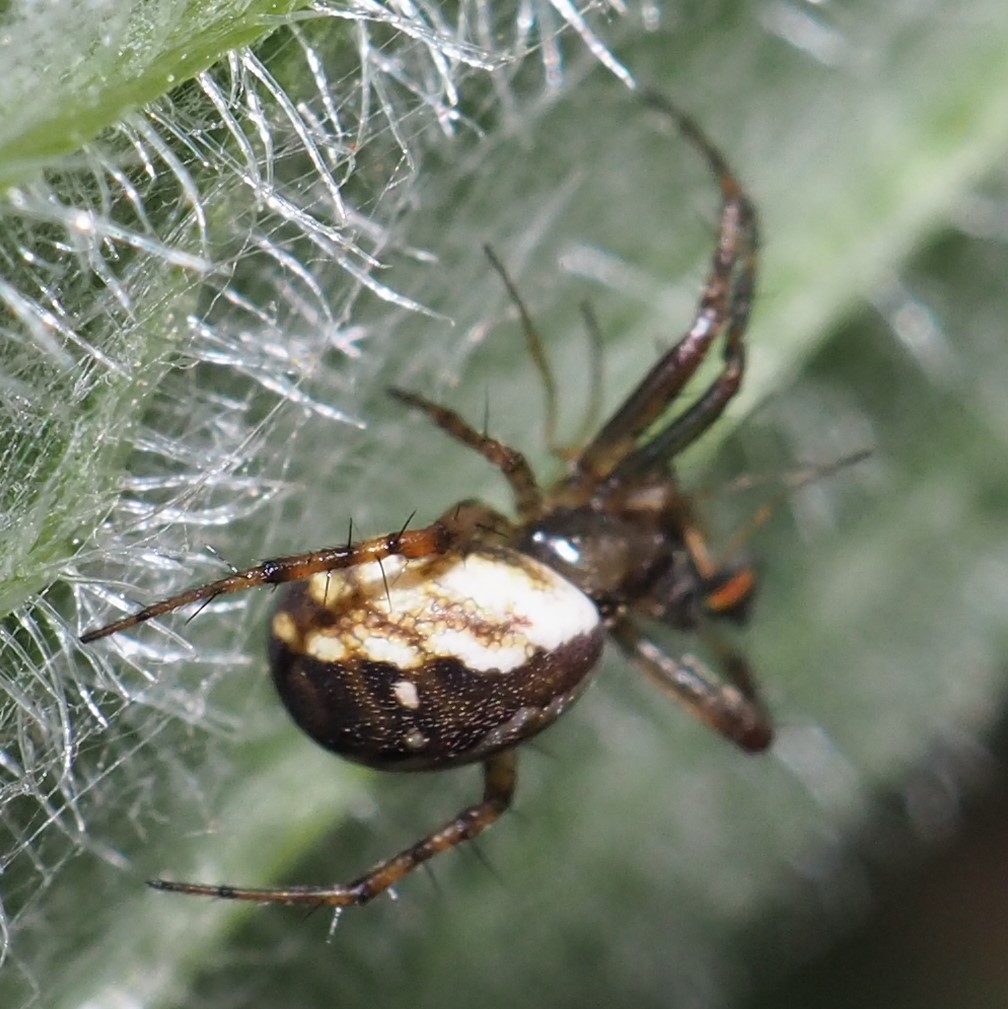
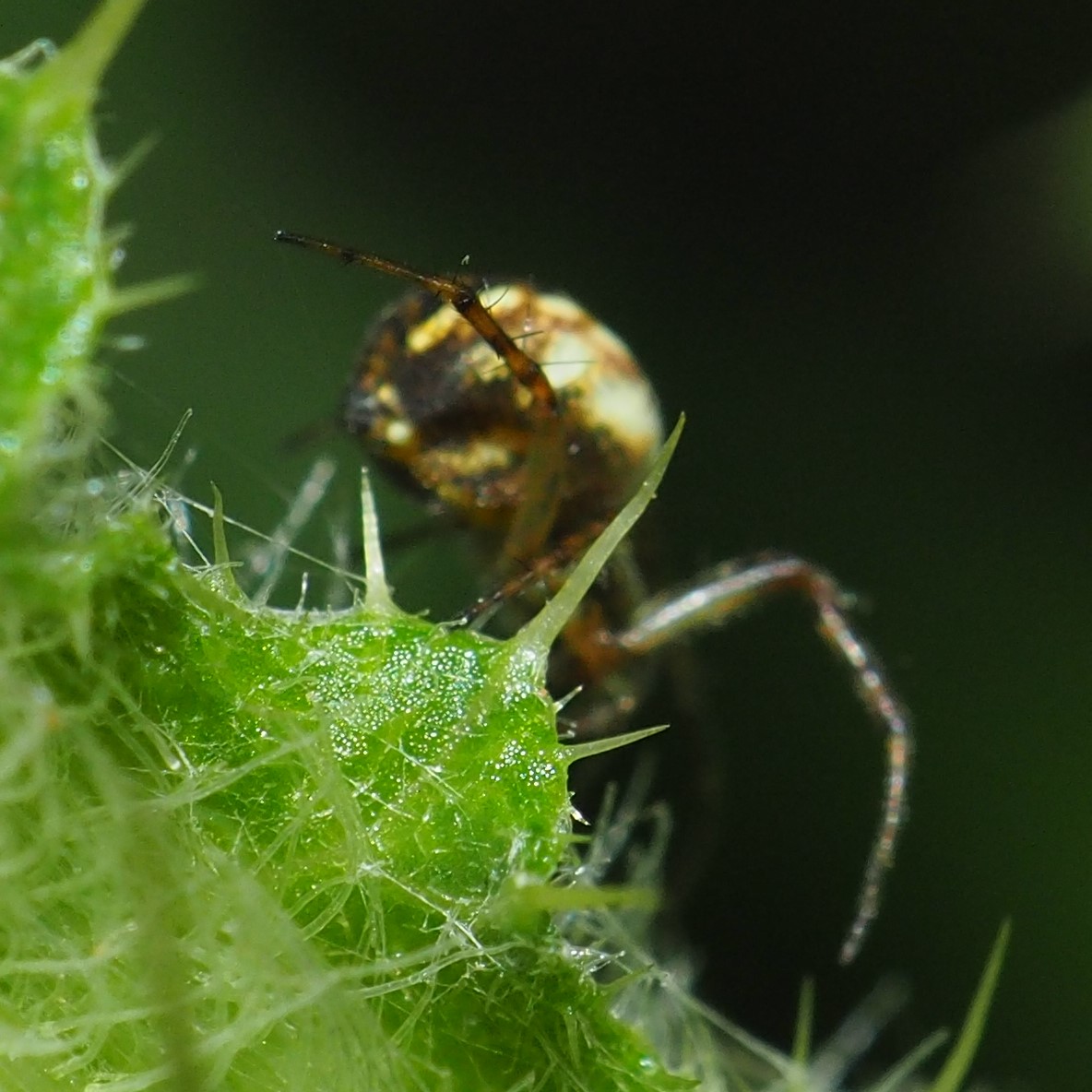
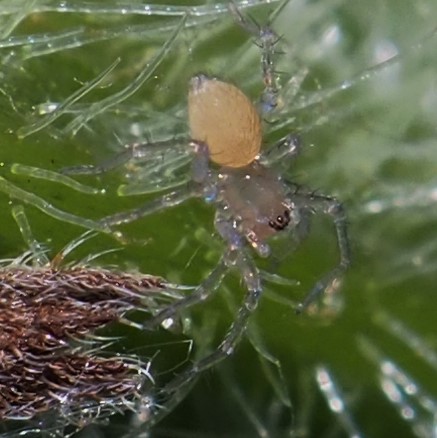
Here is a pink Spider from the Goldenrod or maybe the Asters. Then a juvenile Cross Orbweaver.
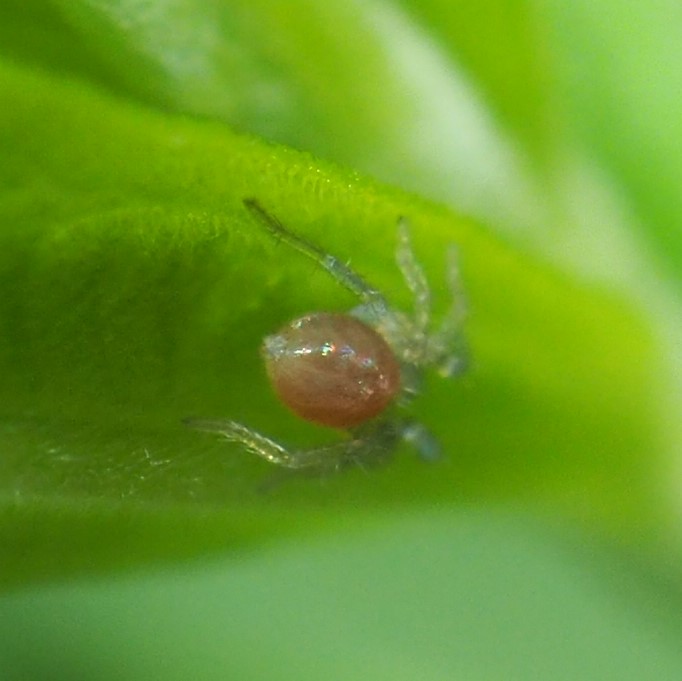

I thought for a while that I'd found a new kind of ant, but then something clicked. I'd submitted the same little character as a kind of wasp already and found that it was a kind of tiny wasp called Encyrtus aurantii. It surely makes a cute ant, though, doesn't it? Second is another really minute little creature.
This third fellow is not a caterpillar, but a baby Sawfly. The closest I can come is that it must be a Solomon's Seal (technically a False Solomon's Seal) Sawfly. I love the coloring! I haven't seen any of these on either brand of Solomon's Seal, but I do have both. Actually, y'know, I believe that is an Aster it's eating!



That's about it. Let me end with some pond pictures. The colors seem to come out much less washed-out when I take the picture with the Water Lily between me and the sun. I just realized that I hadn't shown off Froggy earlier. So here goes:



How are you all? I keep thinking of all my old friends in all sorts of places. I'm so glad we have email and the internet to keep up but still wish we could be together again. We had so many things to laugh about. Chaim is talking me into getting an Iphone - who knows, maybe I'll learn how to use the darned thing...
Love, Martha
Back to June 21, 2020
Forward to July 5, 2020
Back to main menu
copyright Martha O'Kennon 2020













































































































